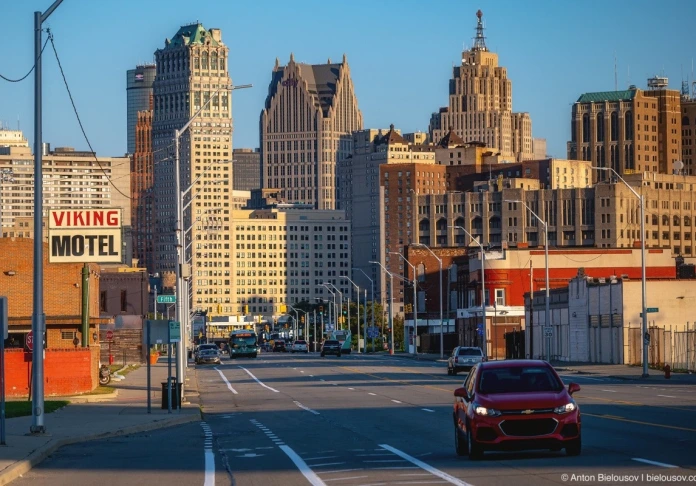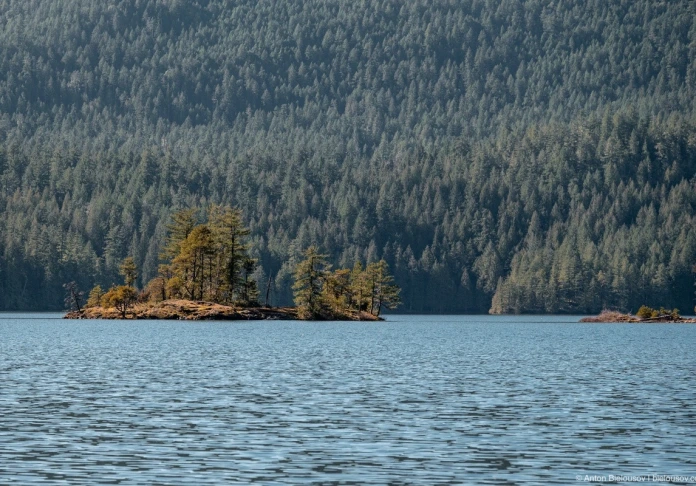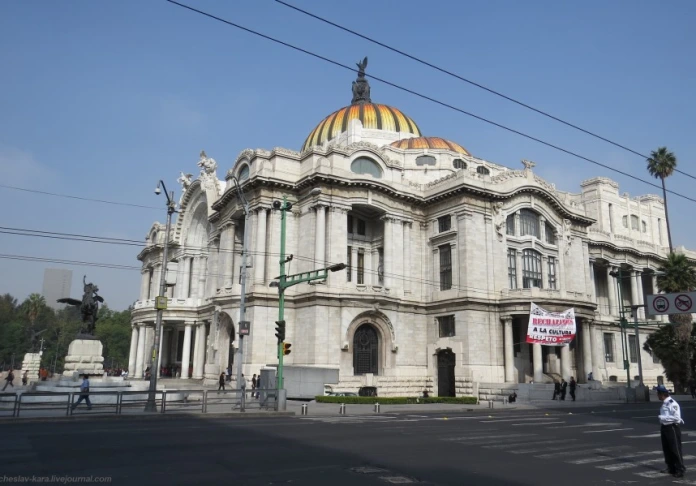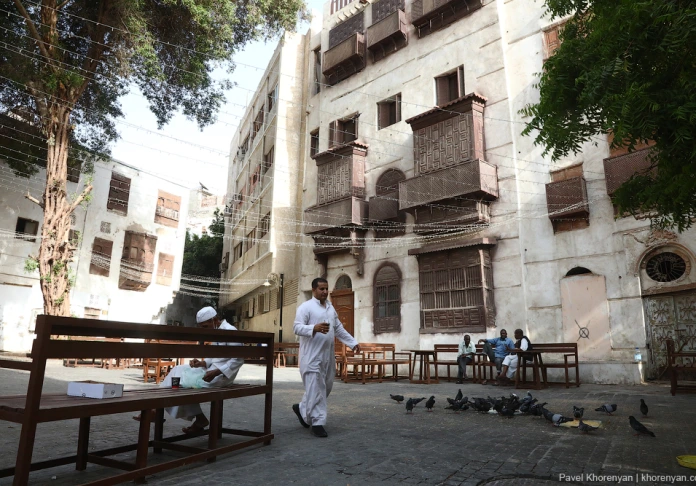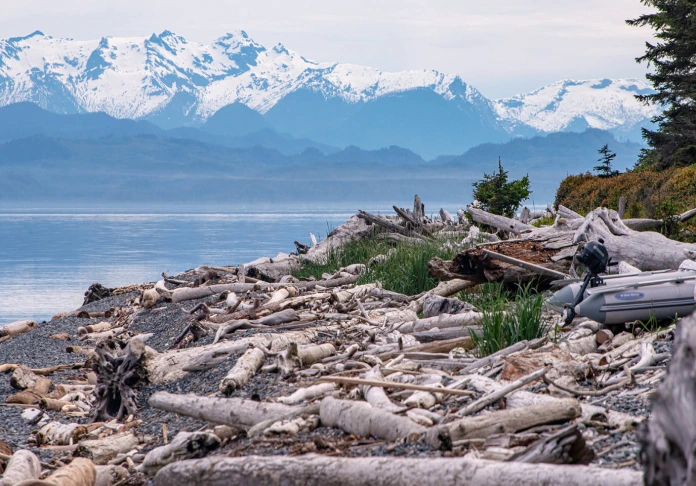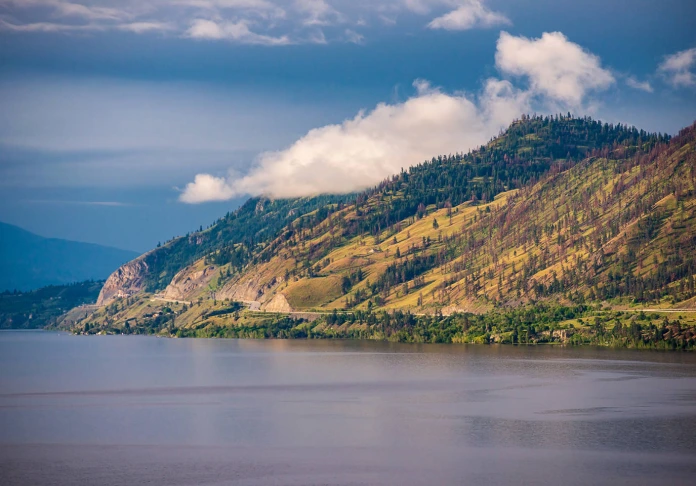VASA museet - one museum exhibit in Stockholm
In Stockholm there is a remarkable museum. Huge complex very close to the city center, at a distance of less than a kilometer from the Royal Palace. The museum was built at the end of the last century, all for one exhibit. But what ...
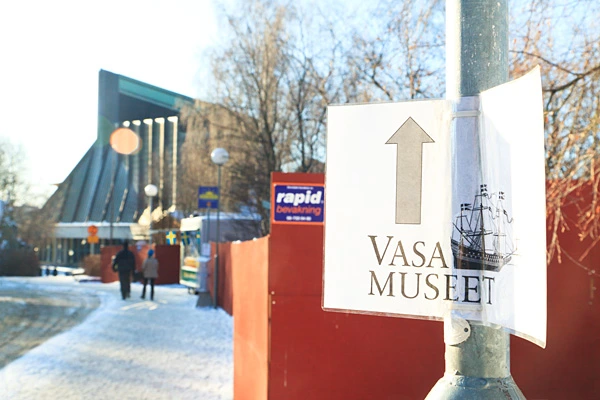
At the beginning of the XVII century Sweden became a great power. The royal family spend a reasonable and convincing policy to increase its influence in the region and in continental Europe. Like any naval power she needed a powerful navy. In the words of King Gustav II "Prosperity depends on the kingdom of God and of our fleet." But more to the king wanted a flagship of the fleet, able to instill into the hearts of the enemies of AKDN and respect, and the country's citizens to add confidence in the military might of the kingdom. So he had to become the largest and most heavily armed ship in the Baltic Sea. The museum has a small nook, exposure which gives an idea of the time.
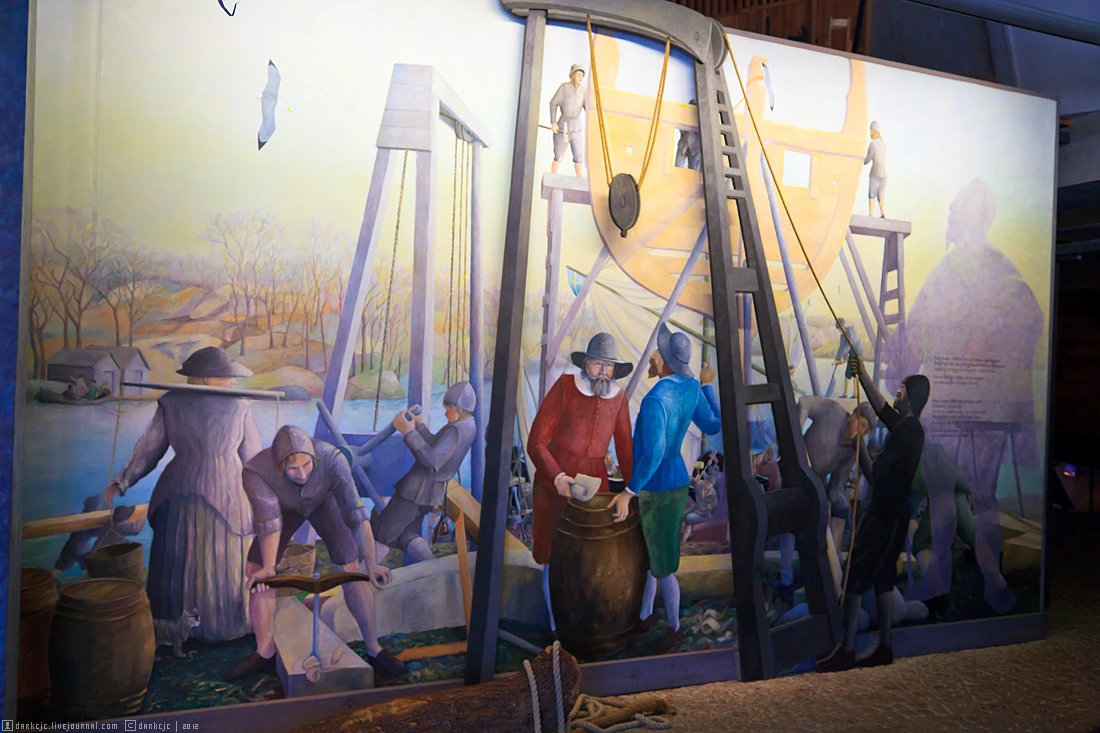
Some shipyards once located very close to the main island of the city, Blazieholmen. And "Vasu" built just there.
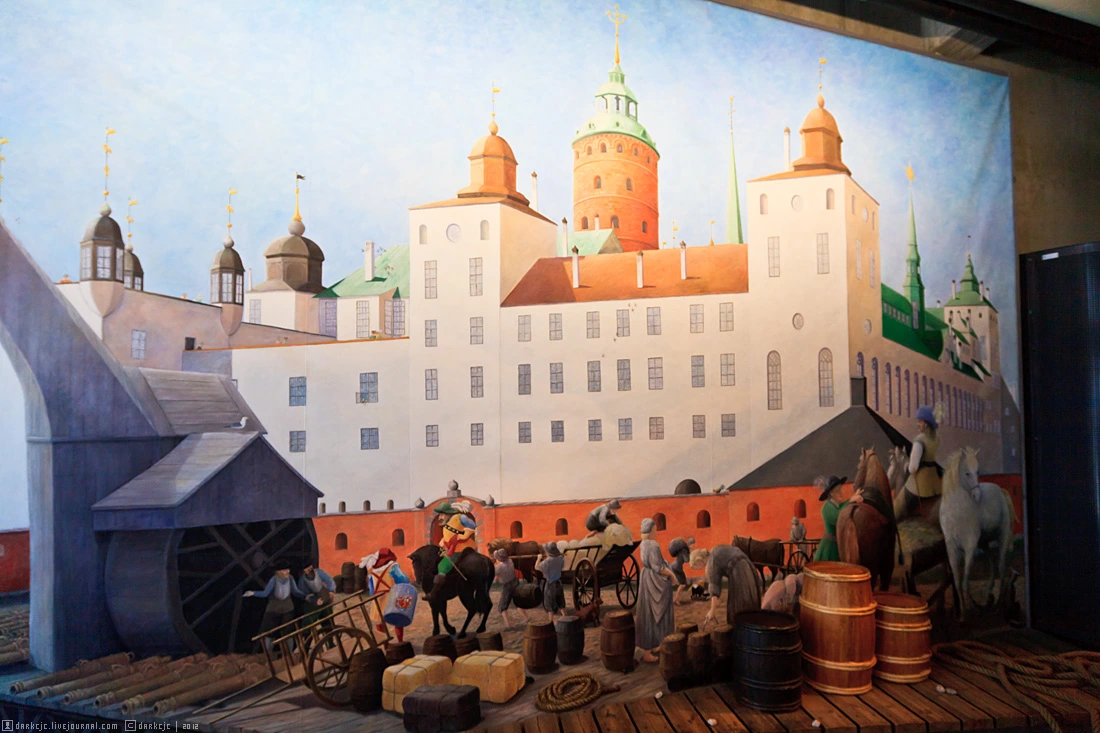
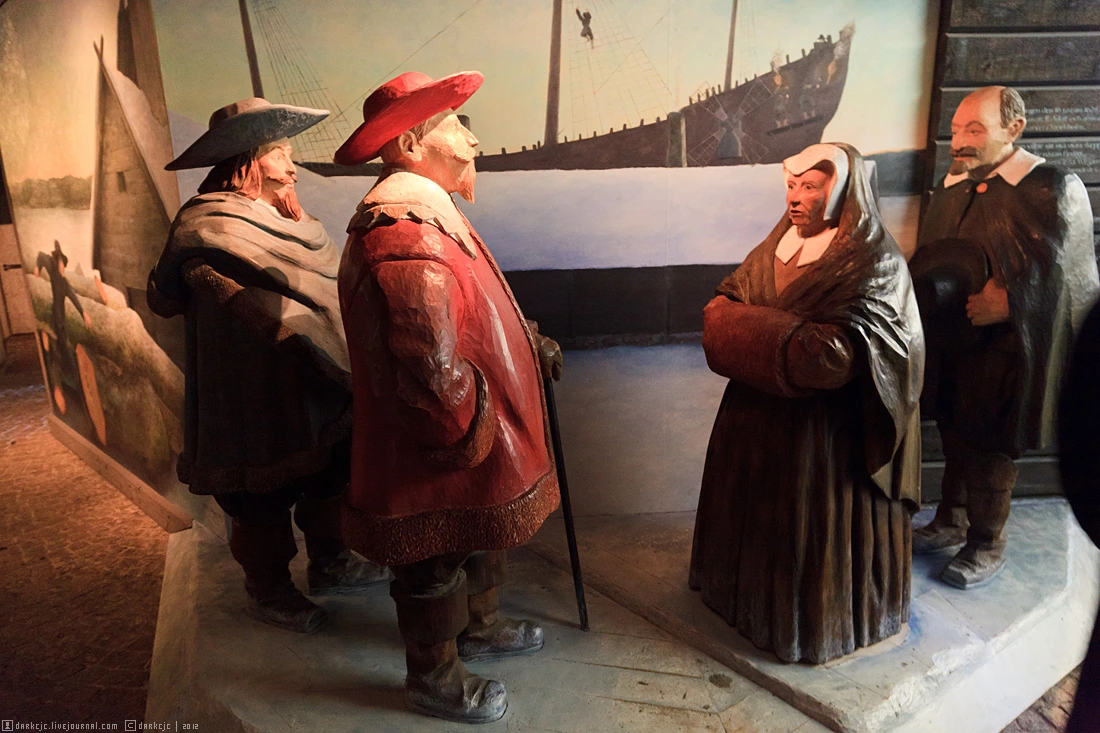
Vasa was really great vehicle for its time. The new flagship was commissioned by Dutch shipbuilder Henrik Hyubertssonu, as January 16, 1625 a contract was signed. Three years carpenters, blacksmiths, sawyers, lafetchiki, carvers, rope and sail Goldsmiths worked on the future of the Swedish pride of the Royal Navy. For its construction took more than 1,000 oaks. The length of the ship was 69 meters long and 11.7 meters. Height from keel to the tip of the mainmast of 52.5 meters, depth 19,3metra, draft 4.8 meters, with a displacement 1,210 tons.
On the arms ship is 64 guns, placed on two gun decks.
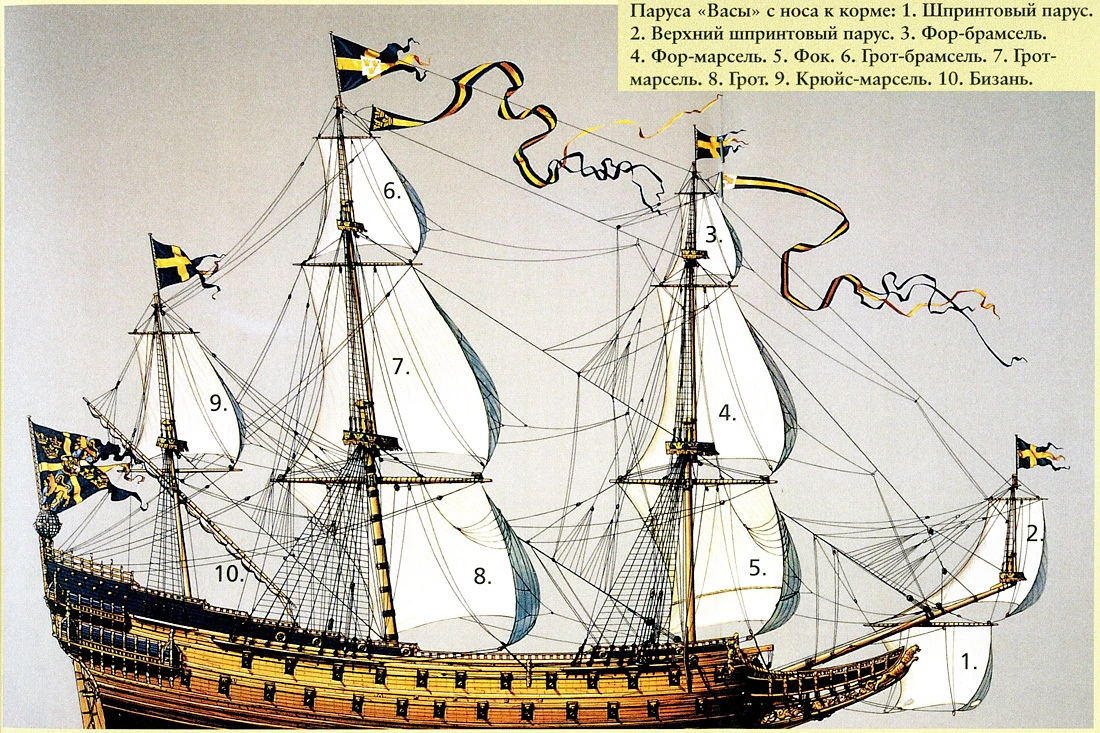
Figure Bjorn Landstrёma.
In the summer of 1628 the ship was launched and was standing on the mooring in front of the royal castle. There was adopted ballast, fully equipped with accessories and guns were installed. August 10 everything was ready for the maiden voyage. It was a quiet, clear weather, blowing over the bay southeast breeze, and the sea was calm. On board was a crew and guests. Supposed triumph in all its glory.
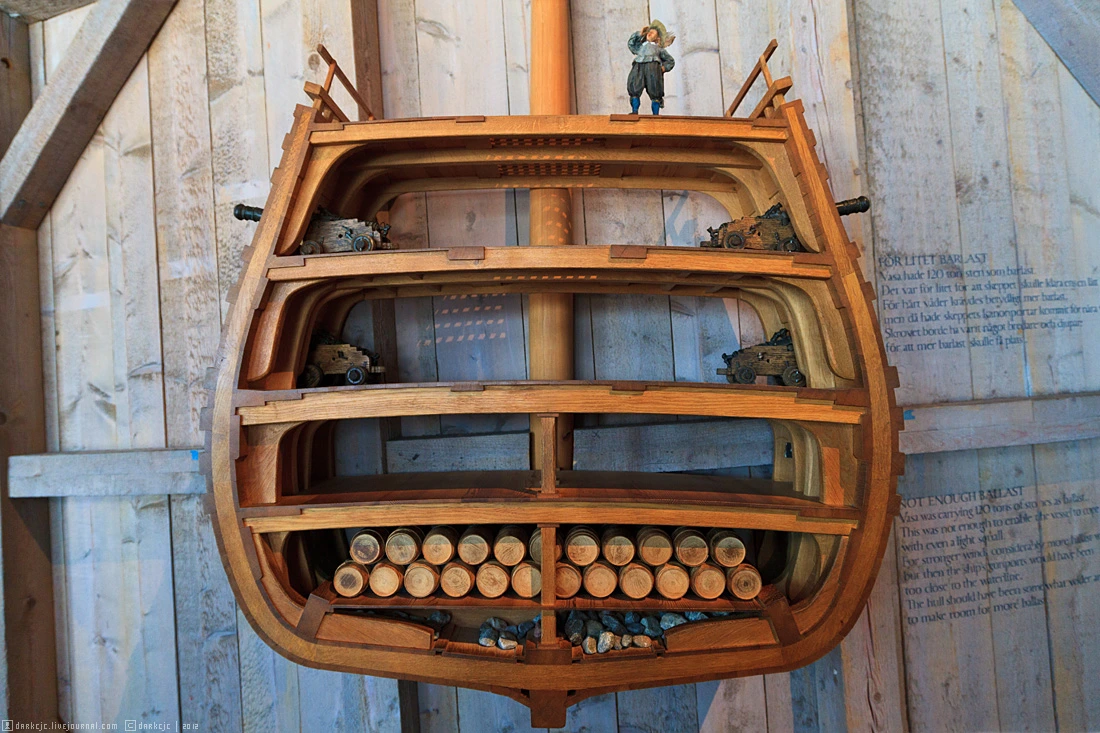
In the harbor gathered many curious. They had plenty of time to look at the departure of the ship. The State Council, in a letter to King Gustav, who was then in Prussia, describes the event: "When the ship reached the open bay Tegelvikena, sails filled with a strong wind, and soon the ship began to list on the leeward side, but straightened up a little and reached Bekholmena, which fell to the side, water rushed through the gun ports, and he walked slowly to the bottom with their sails, flags and all the rest. "
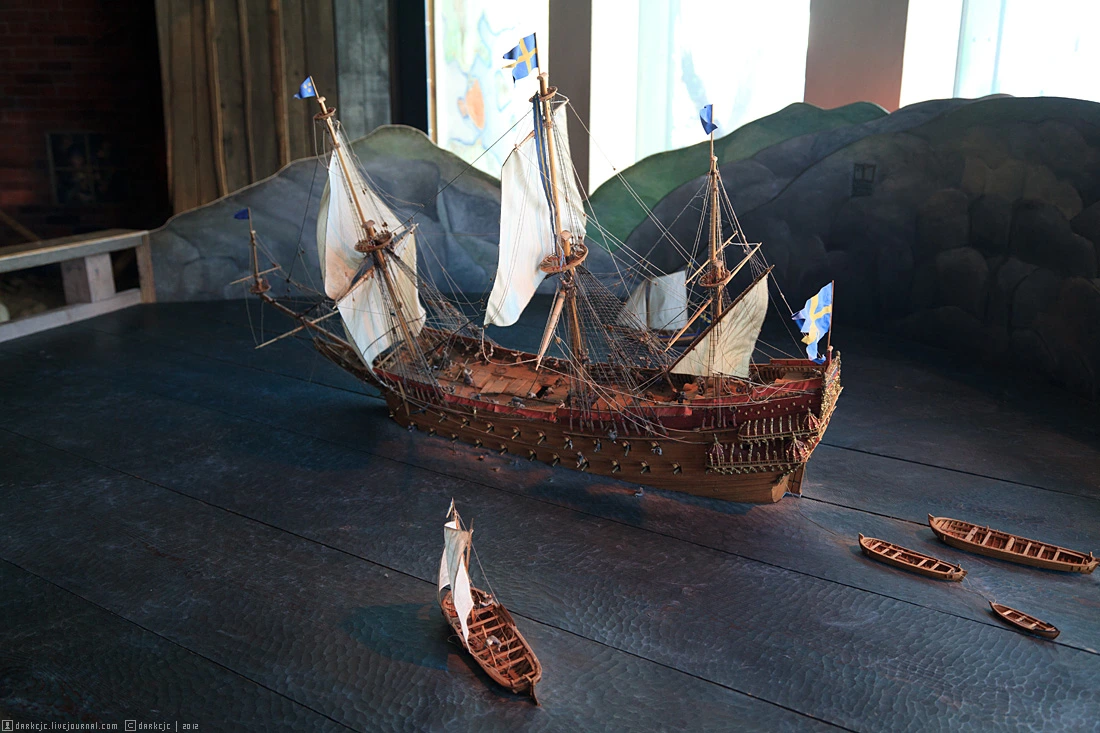
A gust of wind tilted and sank the ship after only 1300 meters of swimming.
The captain of the surviving team and was immediately arrested, and then began the interrogation and trial. The captain swore he was not guilty, ballast and cannon were fixed, and the team no one was drunk. Sailors confirmed his words. Shipbuilder said that built all "in full accordance with the drawings approved by the king himself, and the Lord God knows who is to blame." The king and God equally infallible.
Until the end nobody knows who was punished, but the captain sort planted. The true reason for the accident lay in the lack of sophisticated design of the ship is not able to provide sufficient stability. Attempts to raise the "Vasa" were made in the same year. So many have tried to raise the ship, but to no avail. There was a lot of rogue. The most common idea was to engage the hooks resting on the bottom of the ship and lift. Of course this method is not justified itself.
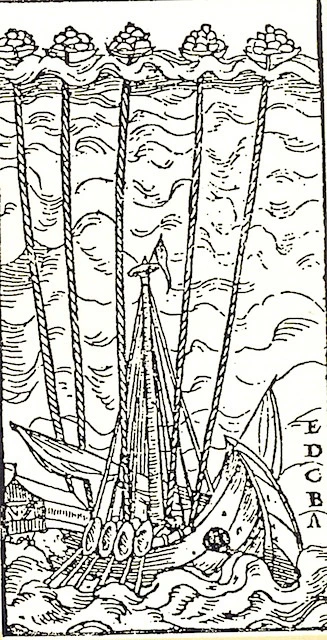
Offered their services to the people "who can go under water" or a modern twist - divers. Then the most advanced technology of diving was "diving bell", which acts as an inverted cup immersed in water. This technology is offered Swede Albrecht von Treyleben and German Andreas Pekkell. "The diver was dressed entirely in leather clothes with double leather boots. He stood on the platform of the lead, which hung under the diving bell" - describes the equipment diver Italian priest Francesco Negri, who was then in Stockholm travel.
Despite such a backward technology in the modern sense man, they were able to make a real feat. More than 50 (!) Guns were raised during 1664-65gg.
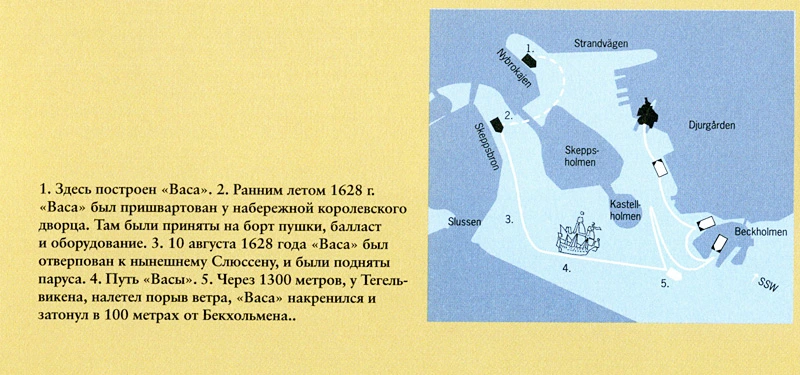
Scheme shortcut "Vasa".
The place where the ship sank located in the heart of the city, almost under the walls of the royal palace. To make it clearer that give comparative examples. It's like in Moscow in the Crimean Bridge in St. Petersburg opposite the Bronze Horseman, Nizhny Novgorod right between the legs Kanavinsky bridge, and to Khabarovsk is a place near the waterbus station. Ie very close to or among the banks, rather than in the open sea and without visible landmarks. But even the Swedes have forgotten the crash site ship.
August 25, 1956 Anders Fransen, engineer and one of the leading experts on the Swedish naval history by personally constructed sampler, managed to find the place of death of the royal flagship. All at a depth of 35 meters.
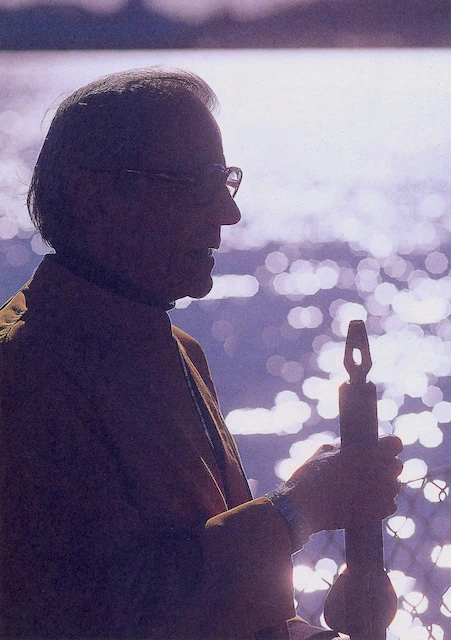
Anders Fransen, who discovered the ship "Vasa".
A few days later the ship went down diver Per Edwin Felting. He confirmed the finding of the ship and its well-preserved condition. This requires an explanation. In the Barents Sea is not found, the worm-grinder. This shell quickly eats small tree, but due to the low salt content of water and no wood can be stored in water even hundreds of years. Therefore, the "Vasa" could perfectly preserved at a depth of 35 meters.
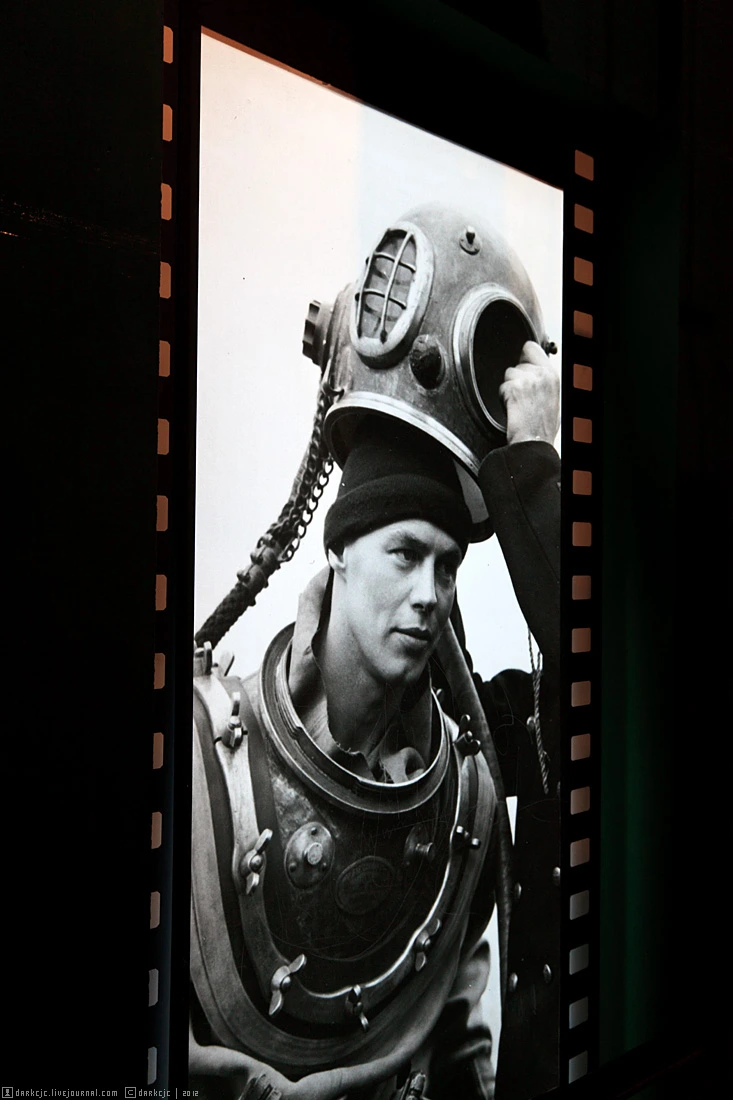
In Sweden, the program began to raise funds for the rise of historical relics. Company "Brustrёms" with experience in sudopoemnyh works promised to fulfill all free. The Navy has provided personnel and vessels. Work started in the autumn of 1957.
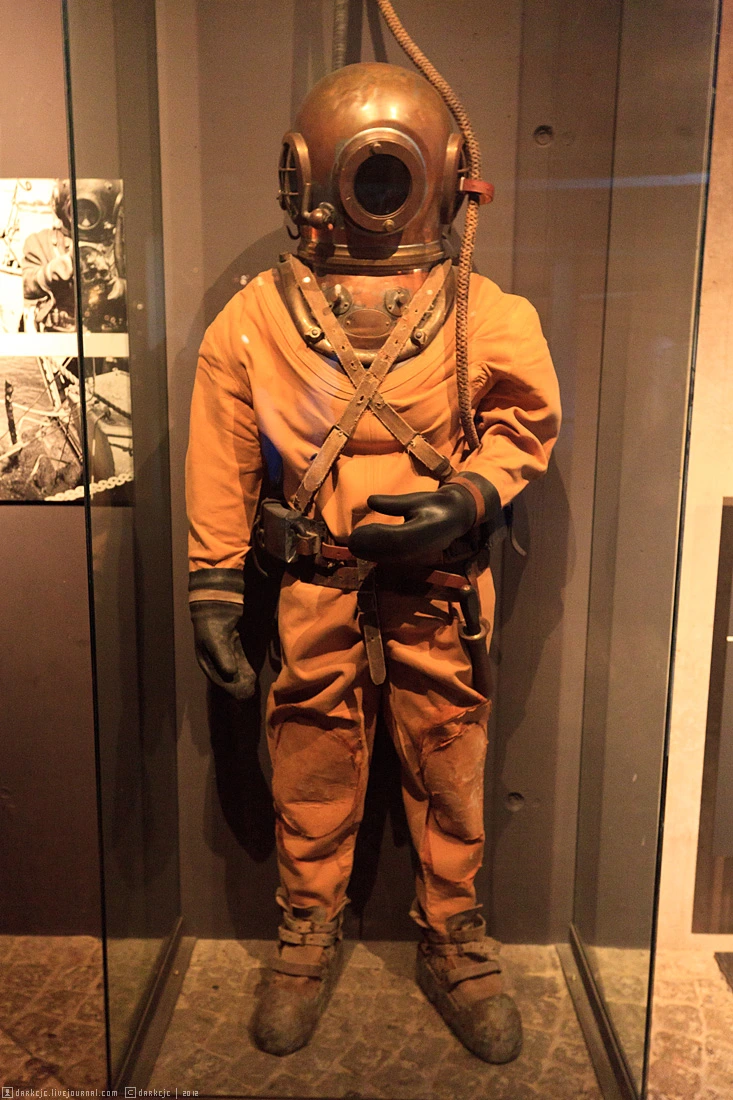
Diving suit those times. It is in them, and follow basic underwater works.
Doubtless heroes operations were divers, carried out in water for many hours a week. Despite the advances in technology, the work of divers required genuine courage, as was done in the dark and was very dangerous.
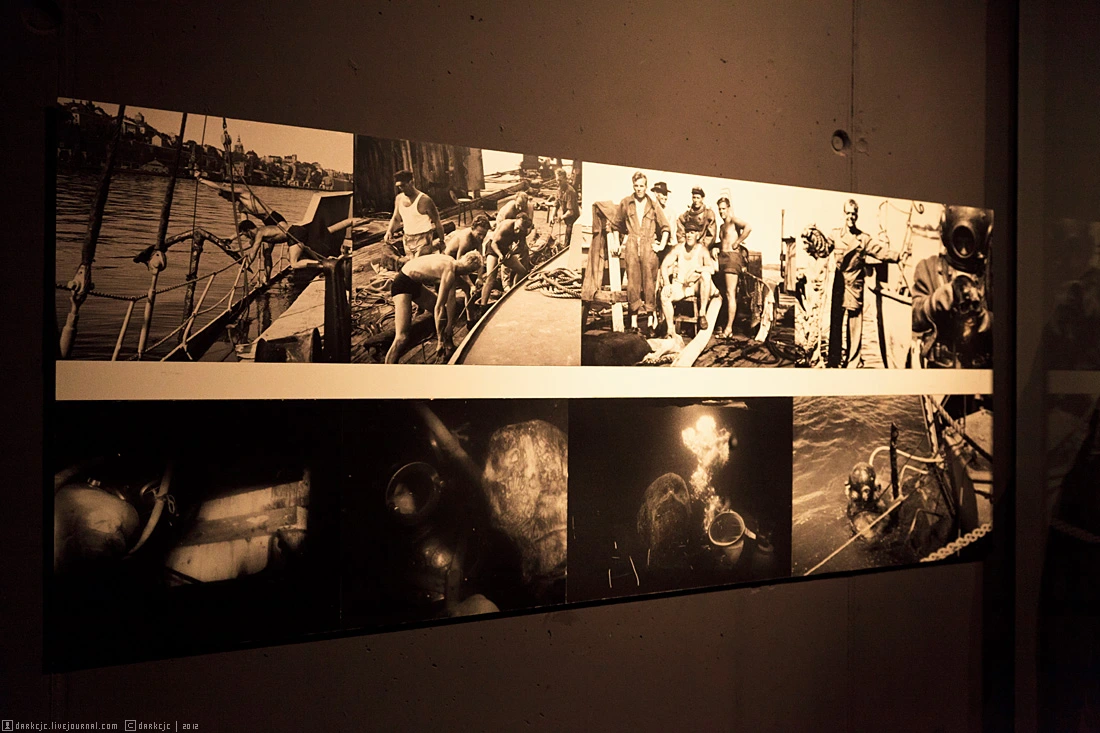
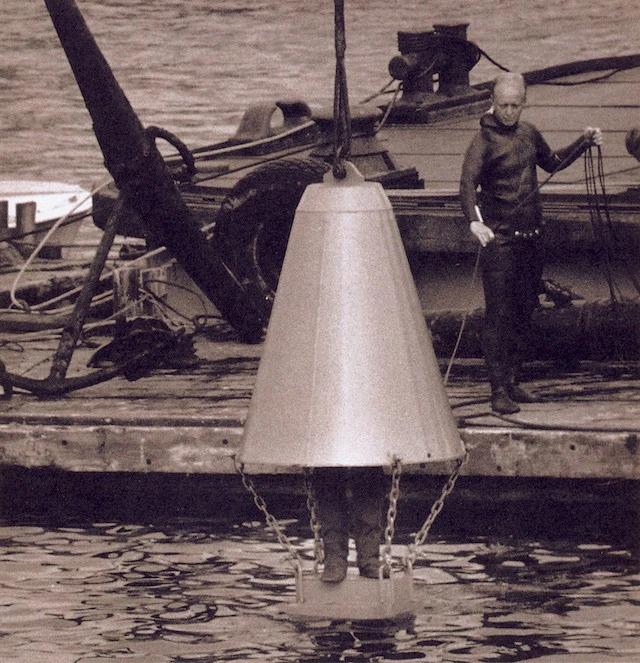
Tests diving bell in design Treylebena in 1958.
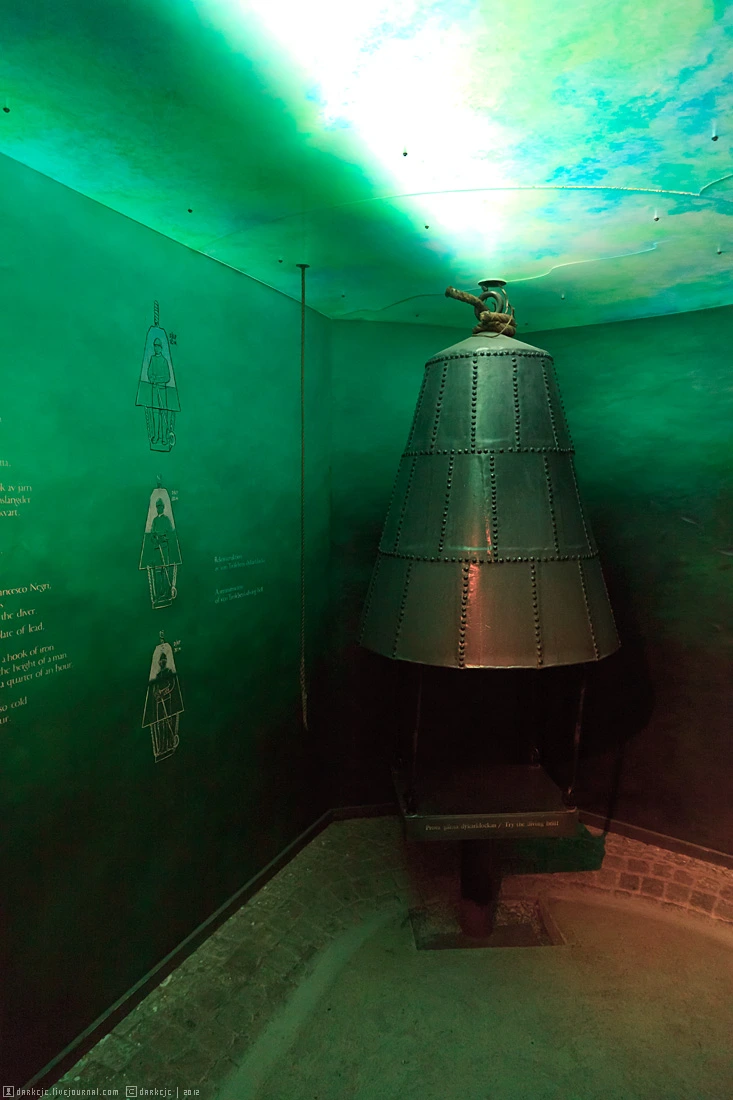
Both the bell in the museum.
Offers various options for recovery. Among them were advanced, time-consuming and simply fantastic. As a result, it was decided to use an elaborate and true technology - rinse under the hull tunnels in the soil and make them the ropes. On the surface to catch them for pontoons and after evacuation of the pontoons to lift water from the bottom of the ship. Work with tunnels lasted two years. No serious accidents had happened, and in August 1959, everything was ready for the first lift. Lifting pontoons have taken the place of "Vasoy" ropes were held in six tunnels and old ship was raised without any problems.
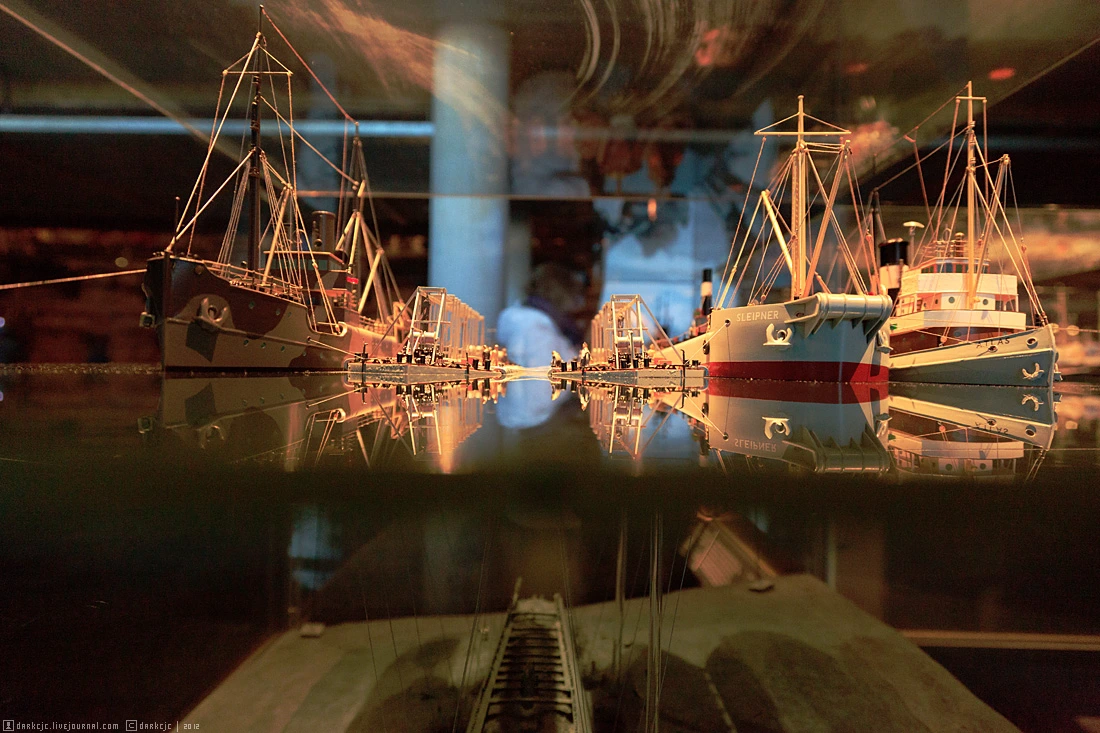
Simulation of the process lifting "Vasa".
But finally lift the ship was still early. The ship was towed to shallow water, where divers again went to work. It was necessary to strengthen the body and close all gun ports with new hatches.
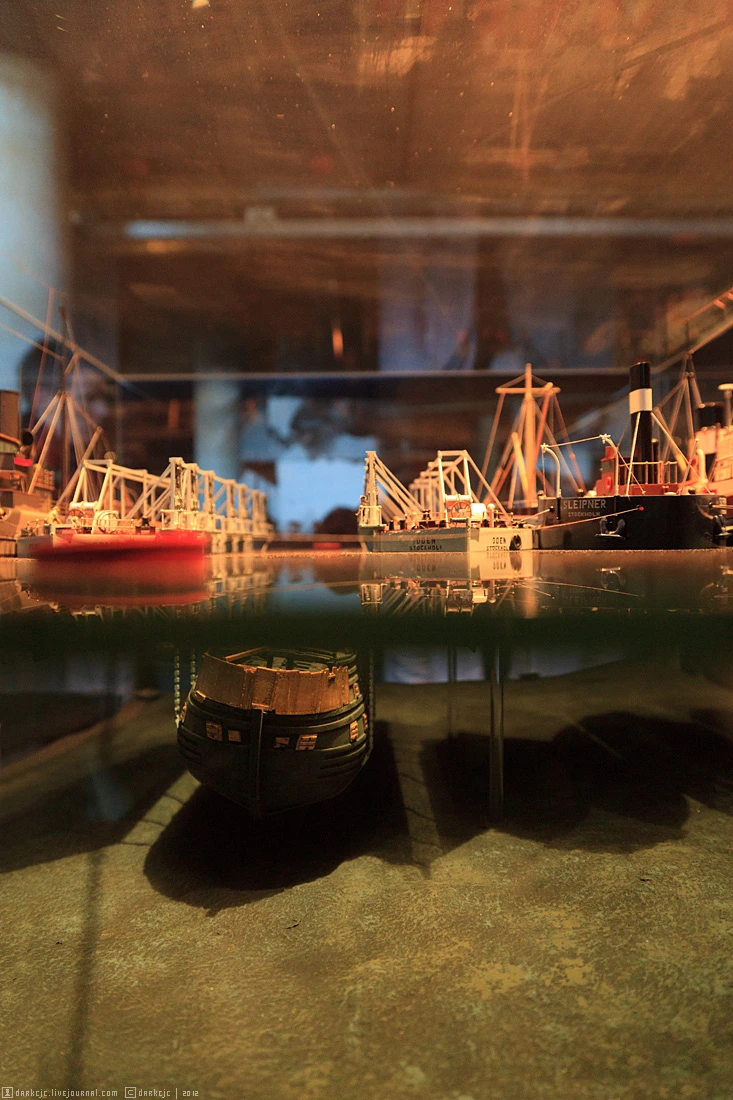
April 24, 1961, everything was ready to rise.
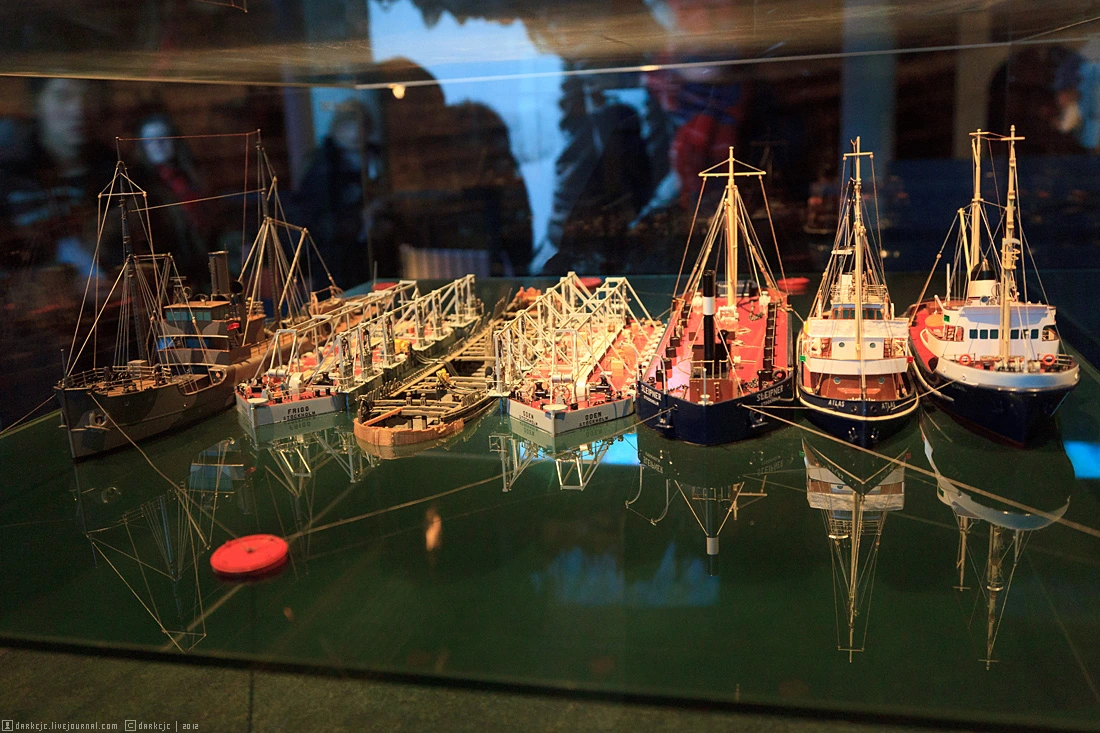
After 333 years at the bottom of the "Vasa" has risen to the surface. First climbed on board and Per Anders Fransen Edwin Felting.
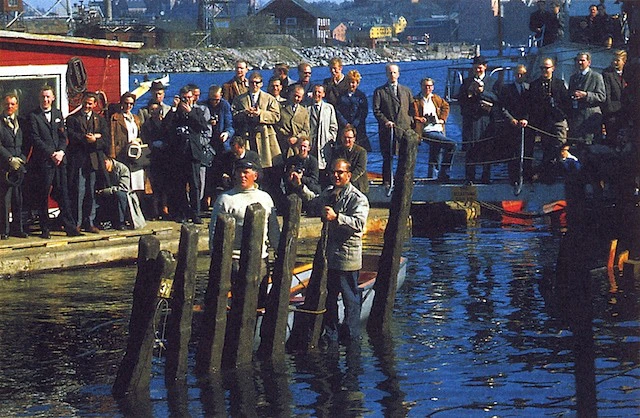
The first moments, when the body "Vasa" after hundreds of years again over the water.
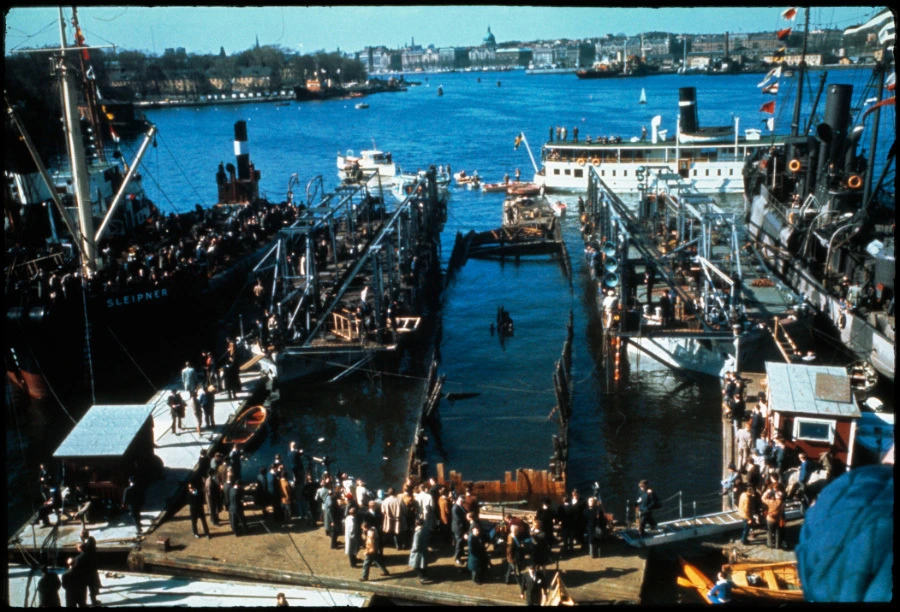
The hull of the ship was in such good condition that towing in dry dock made without additional support "Vasa" afloat.
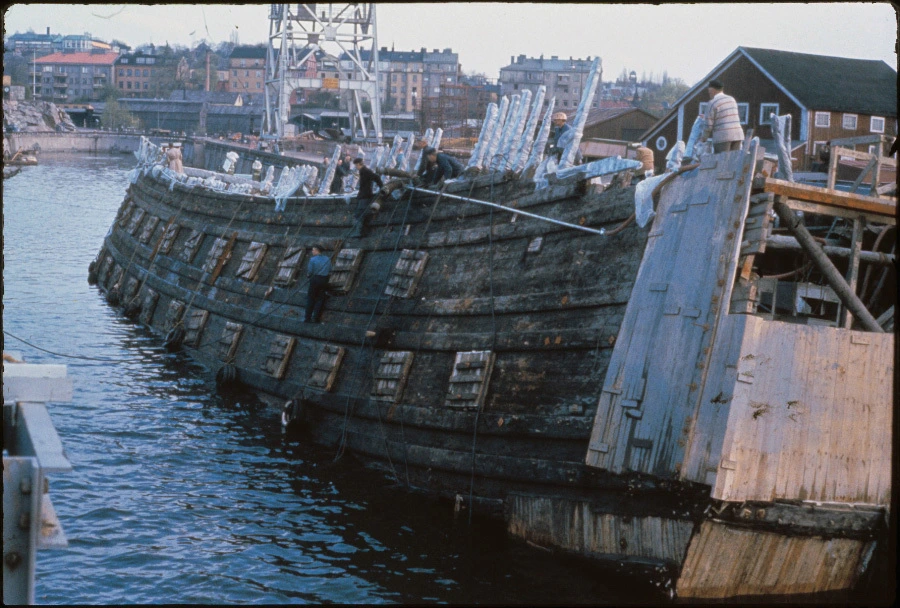
Body "Vasa" closed cannon hatches.
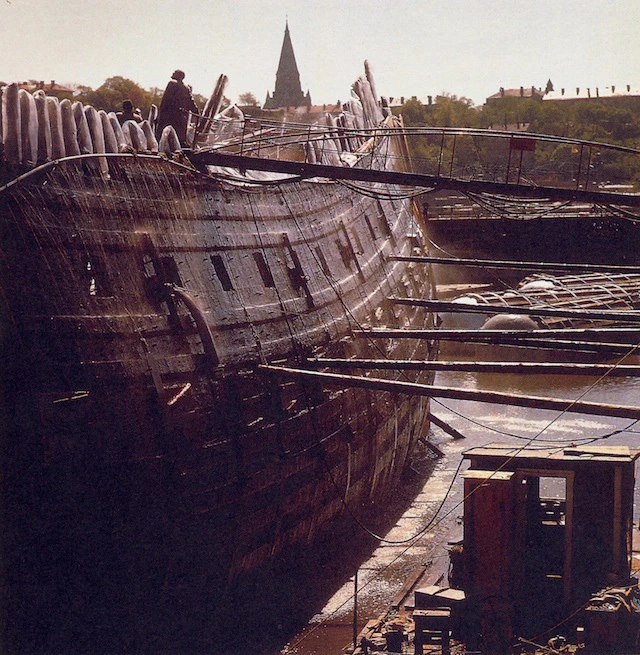
"Vasa" in dry dock.
Were taken unprecedented measures for the conservation and preservation of the ship. Waterlogged tree for many months irrigated with polyethylene glycol. He is able to replace the tree in water as required at that time. Small elements and other findings simply lowered into a bath of solution, and the ship's hull was irrigated through a system resembling a modern fire protection in large buildings.
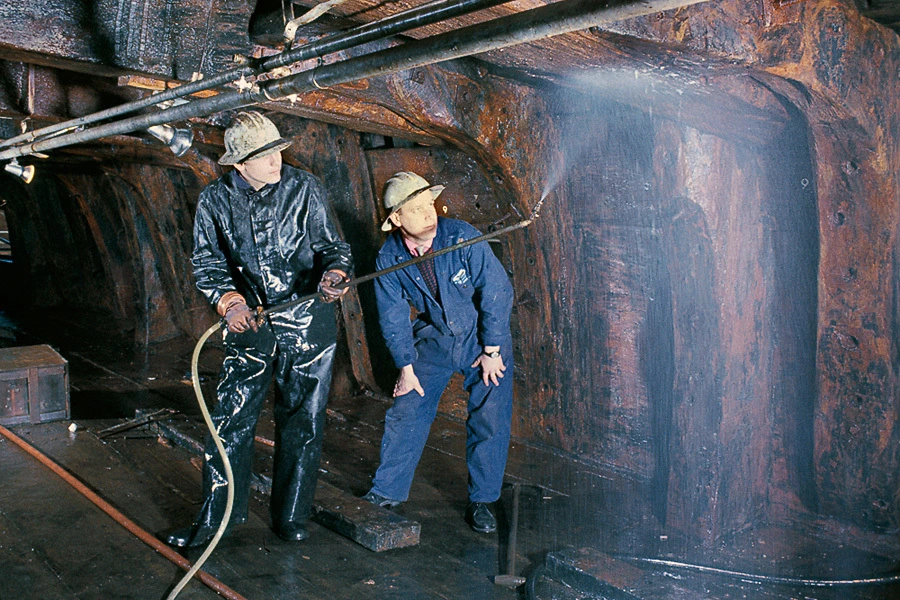
The working time of application preservative mixture by hand.
While the ship was on the conservation and restoration work carried out it was a competition for the design of the museum. From the submitted 384 proposals were selected only one. At the suggestion of Architects museum was housed in the old shipyard (1879). Retaining elements of its dock.
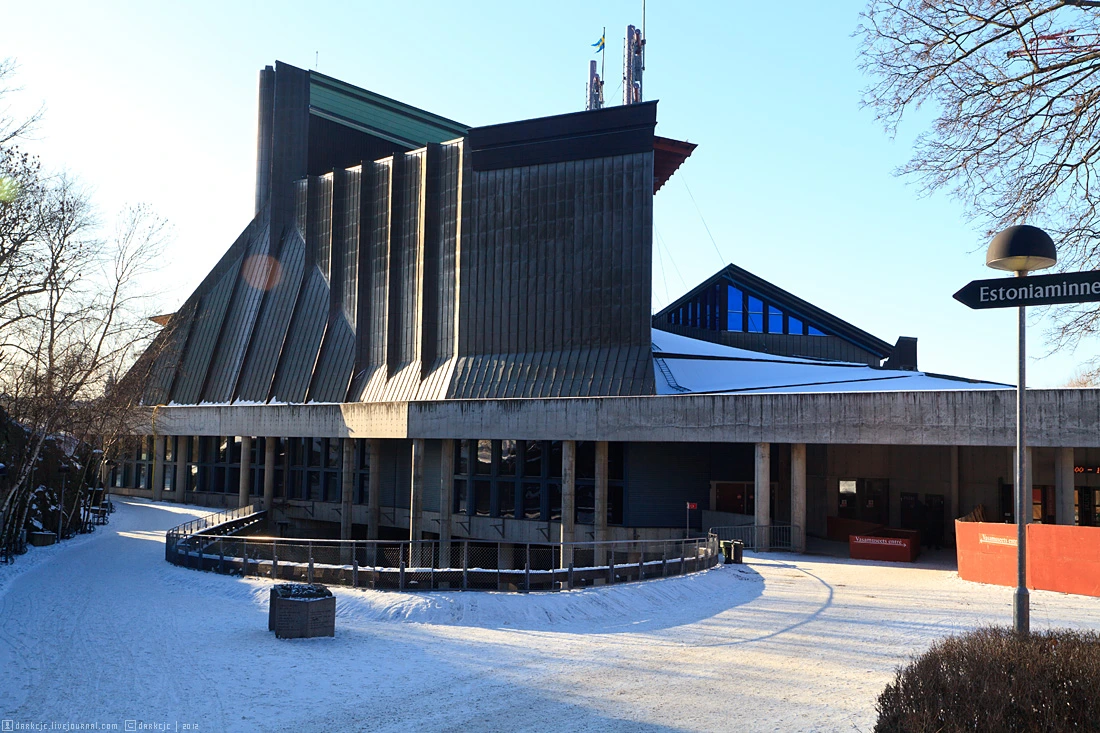
And the first thing a visitor sees entering the museum - that this kind.
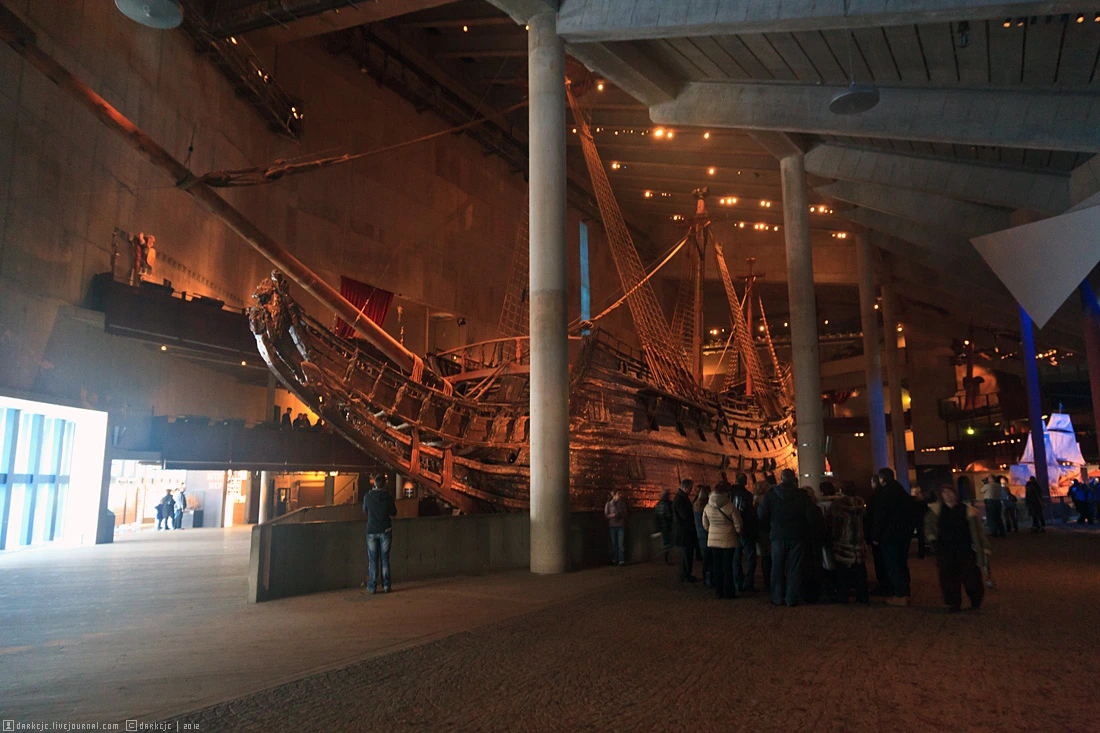
Time for "Vase" stopped at five o'clock in the afternoon of the 10th August 1628. When the ship was raised to the surface 333 years later, in the sailors' chests were still packed food, clothing and small personal items. In the hold were barrels of meat, in the cabin stood admiral table, remained on board the magnificent dining service officer, bronze candlesticks and lamps. "Vasa" is a time machine, which indicates how the life on board and on land in the early XVII century. The safety of the ship and different things on board was just amazing. Save all.
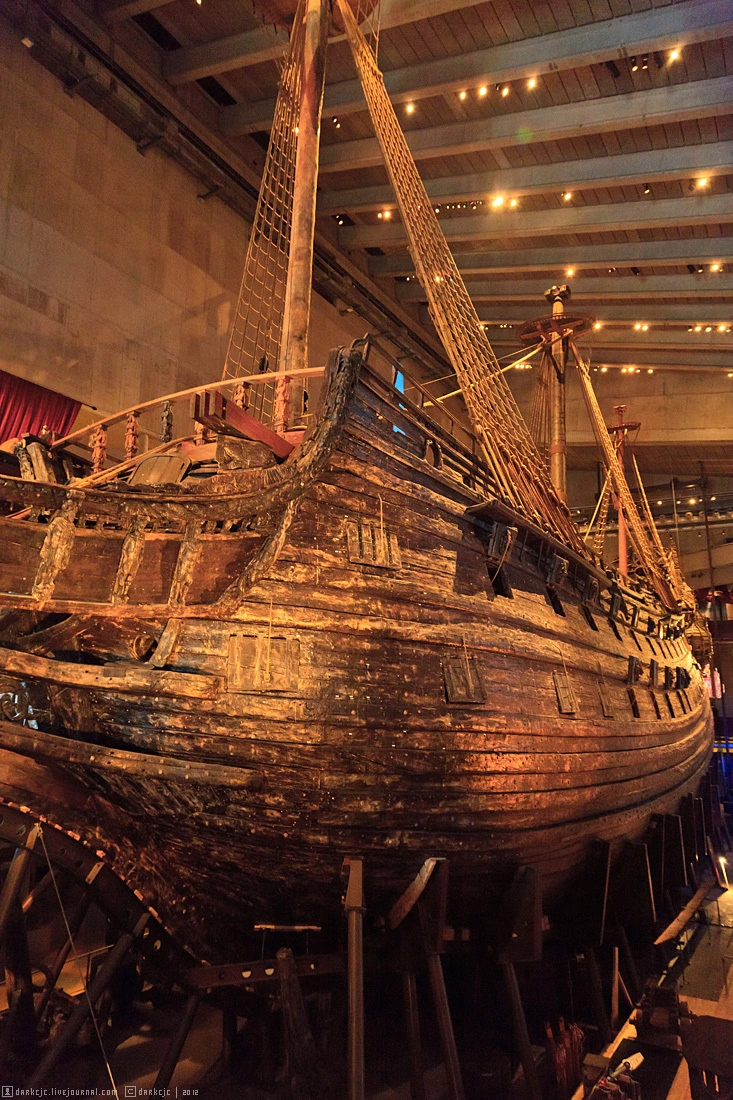
And now the photos from the museum. The complex is huge. Central takes place vnem ship itself "Vasa", and around the exposition with additional exhibits raised with the ship.
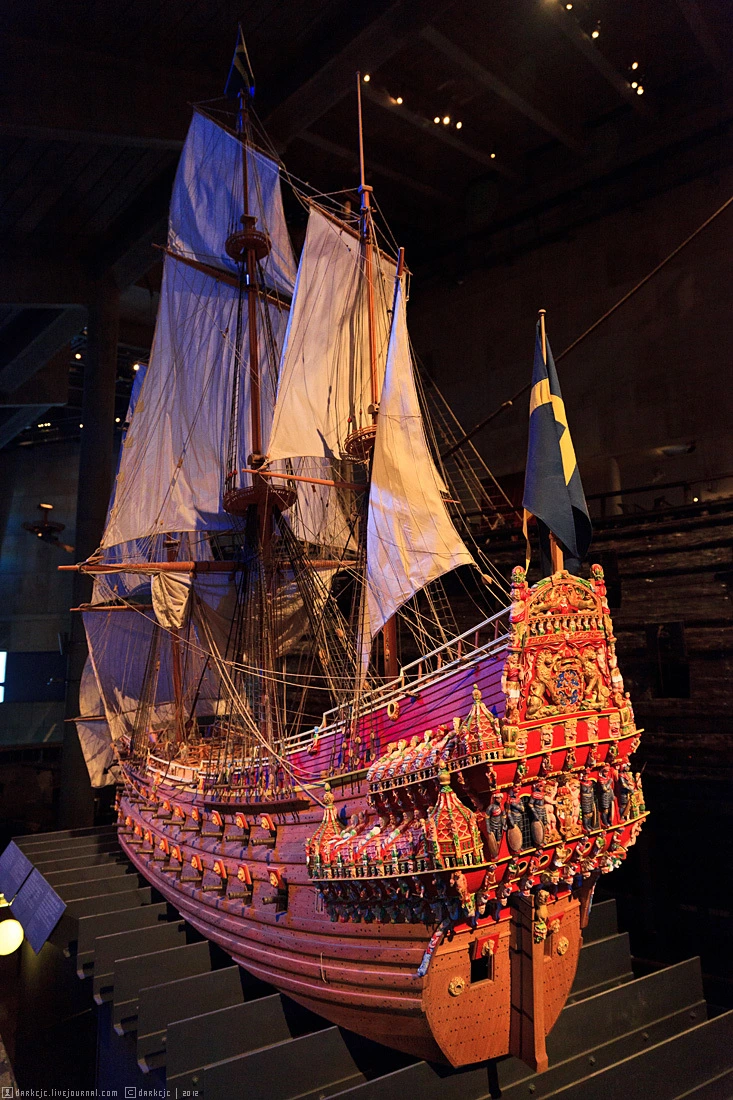
View of the stern of the model "Vasa" with restored coloring.
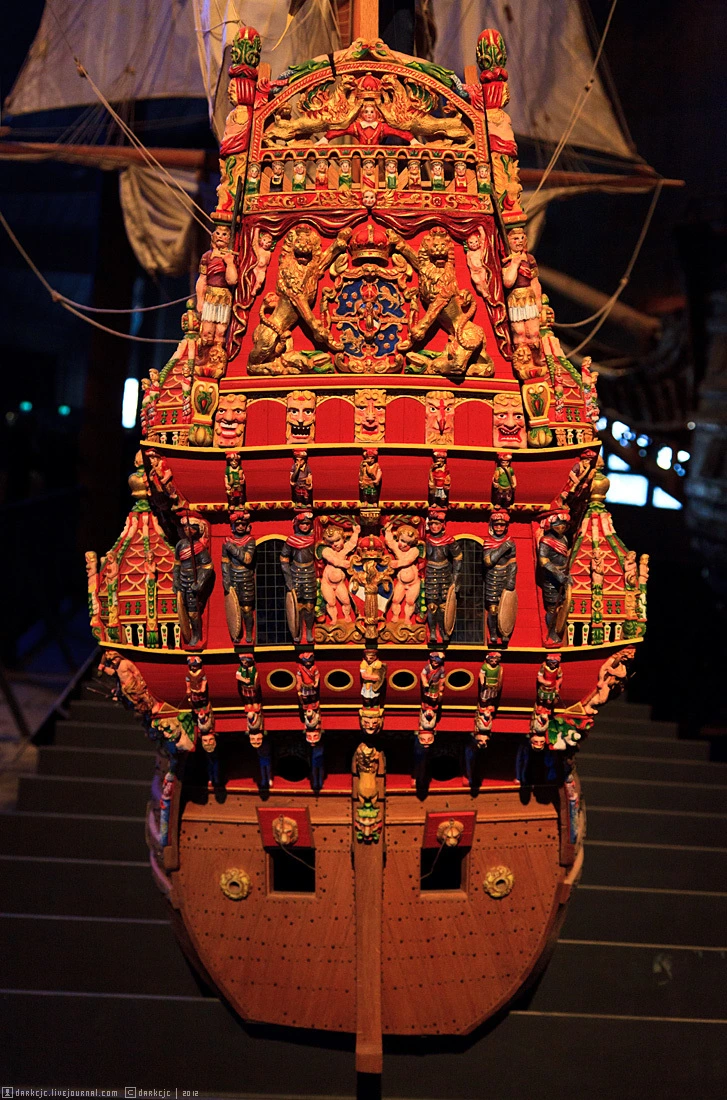
Copies of the sculptures with "Vasa" in the museum.
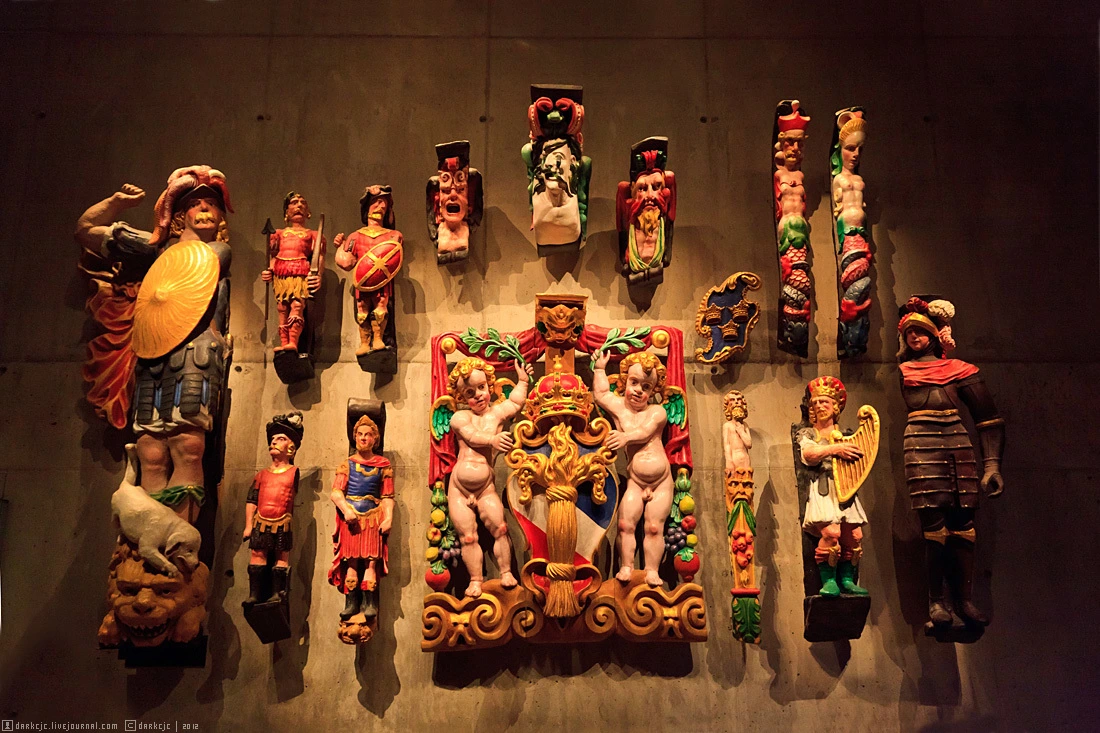
Feed "Vasa". Almost all of the elements of authenticity more than 350 years. Distinguish them easily. Where wood is bright and smooth - a modern insertion. Where wood is dark and uneven - the original age of hundreds of years.
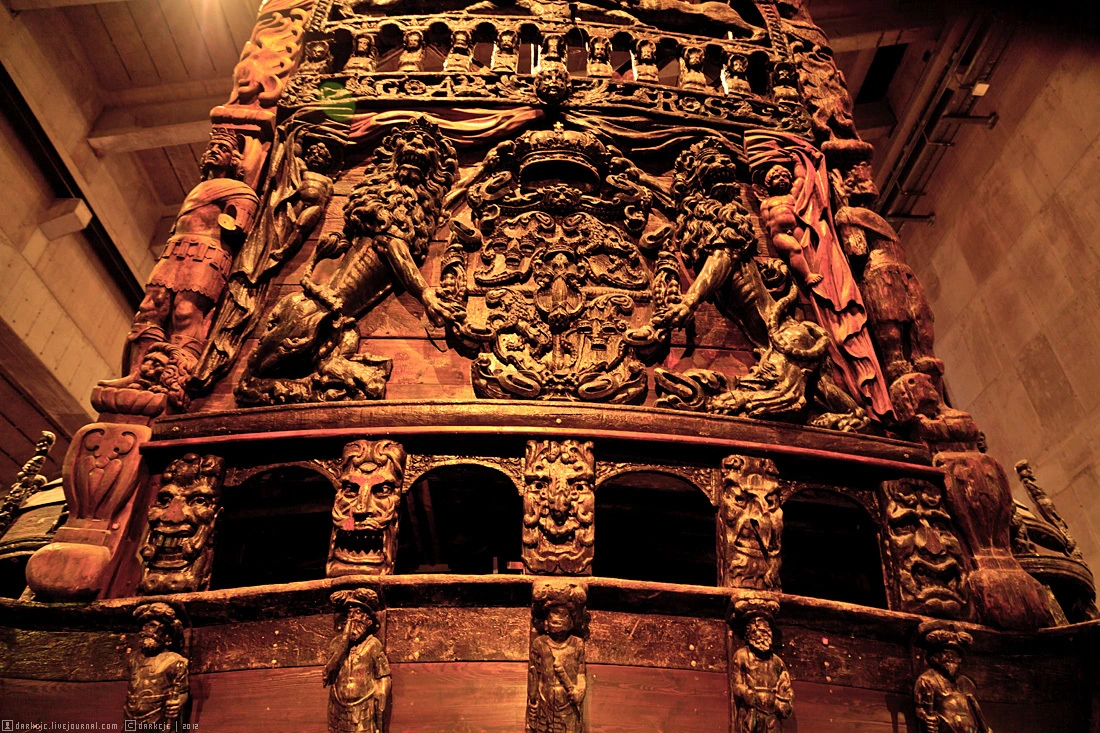
View of the port side of the stern. Before that I had heard about this museum, but to see such on the verge of unreality. The ship made of wood, which is more than three hundred years, and in such great condition .... This is something unreal.
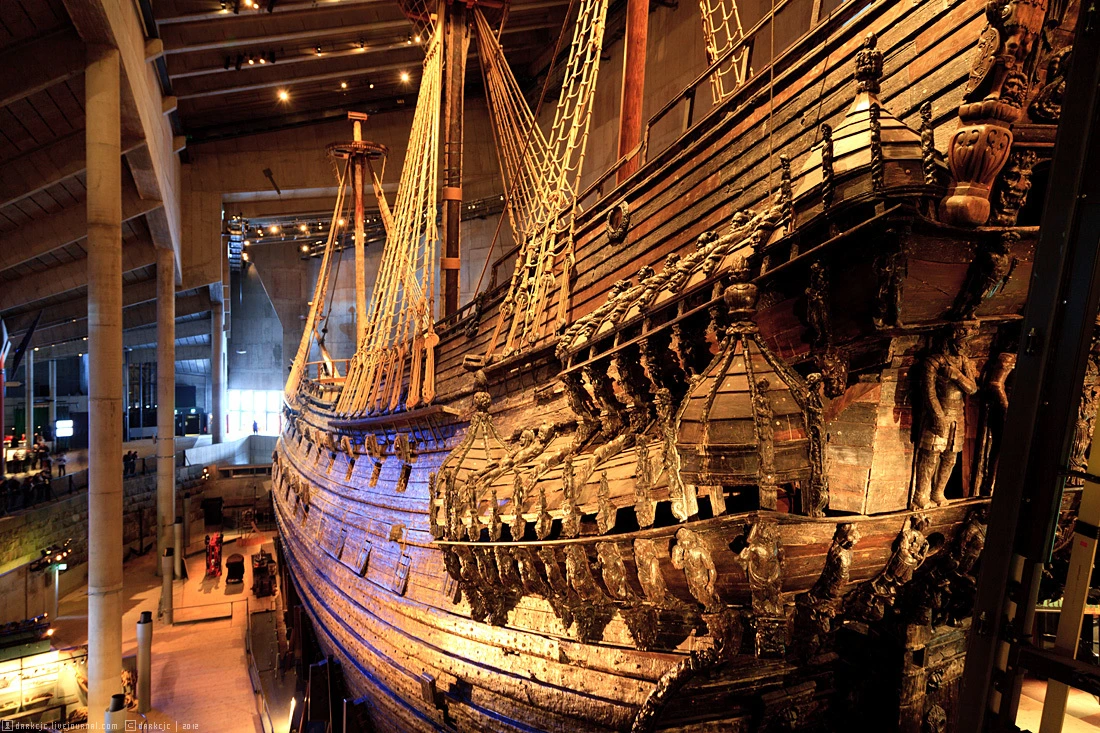
The ship brought in awe not only by the presence of powerful weapons, and hundreds of sculptural shapes.
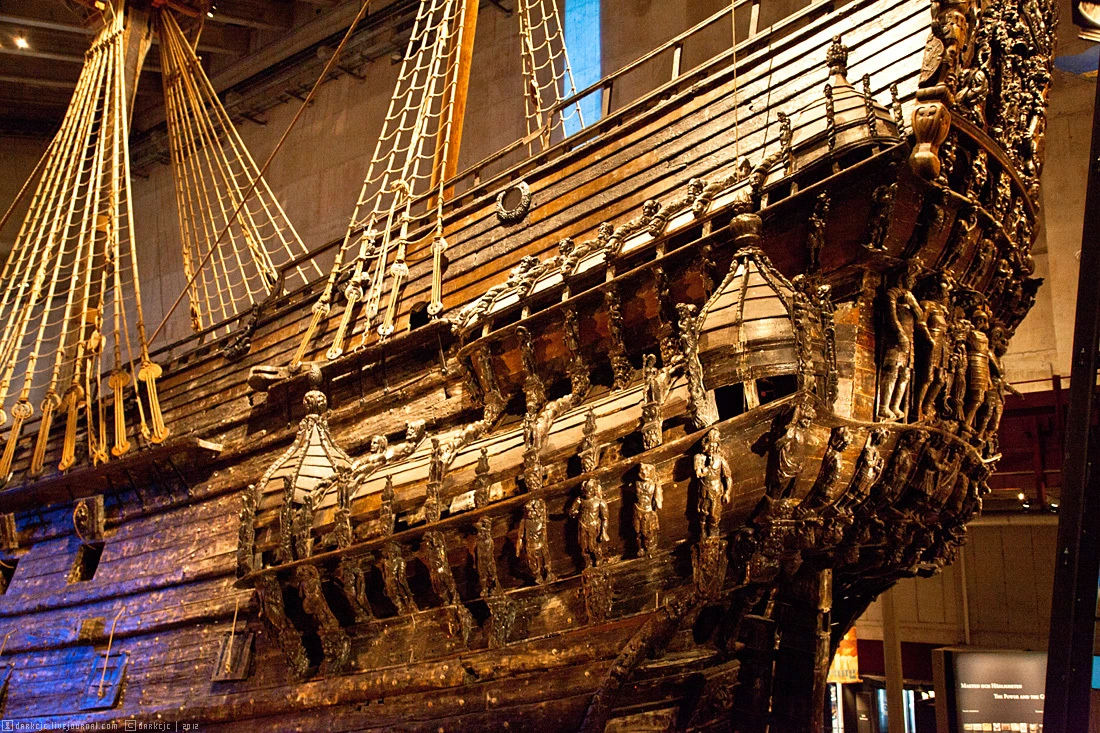
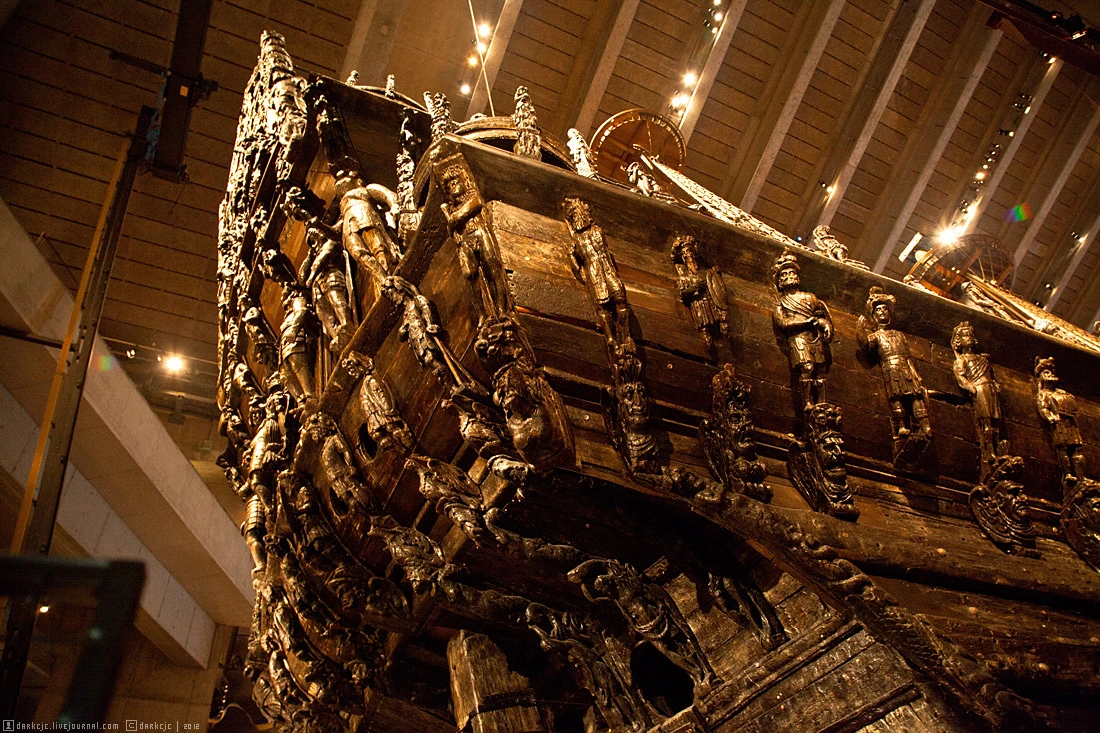
Hundreds of sculptures, clinging and clambering around the ship - it was a real orgy of naked flesh, blood red, poisonous green and blue-colored sea.
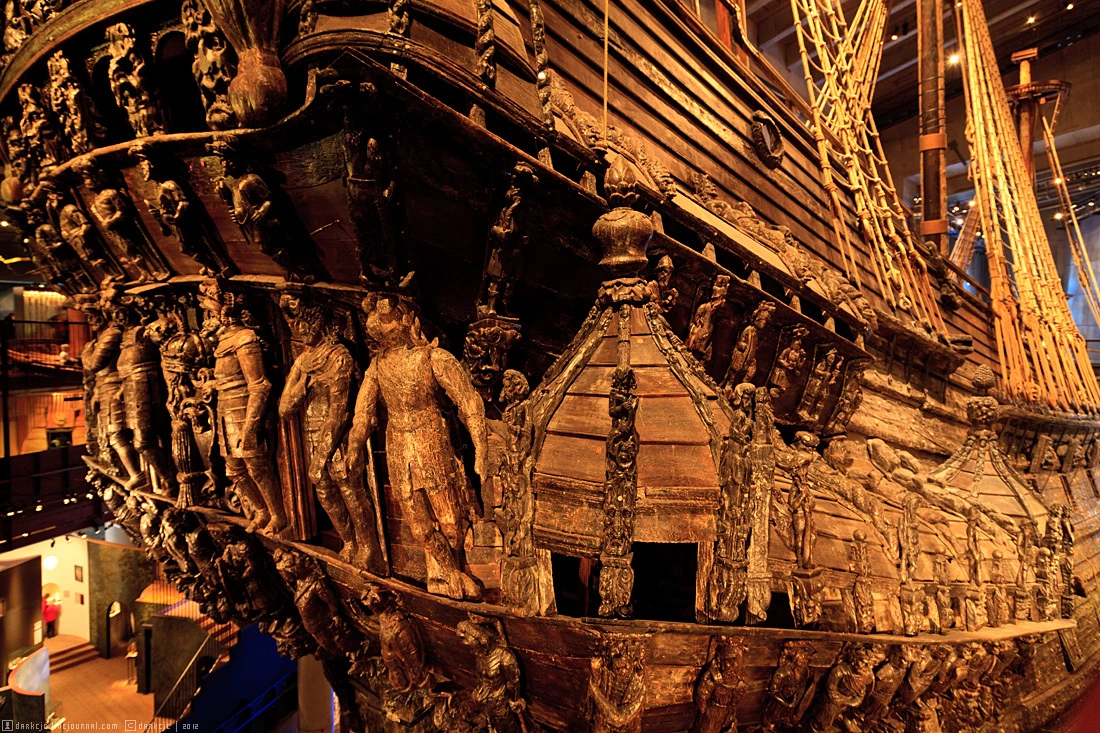
In our time, easy to brush off all this as simply bad taste. In the seventeenth century it was called incomparable, this willingly amazed.
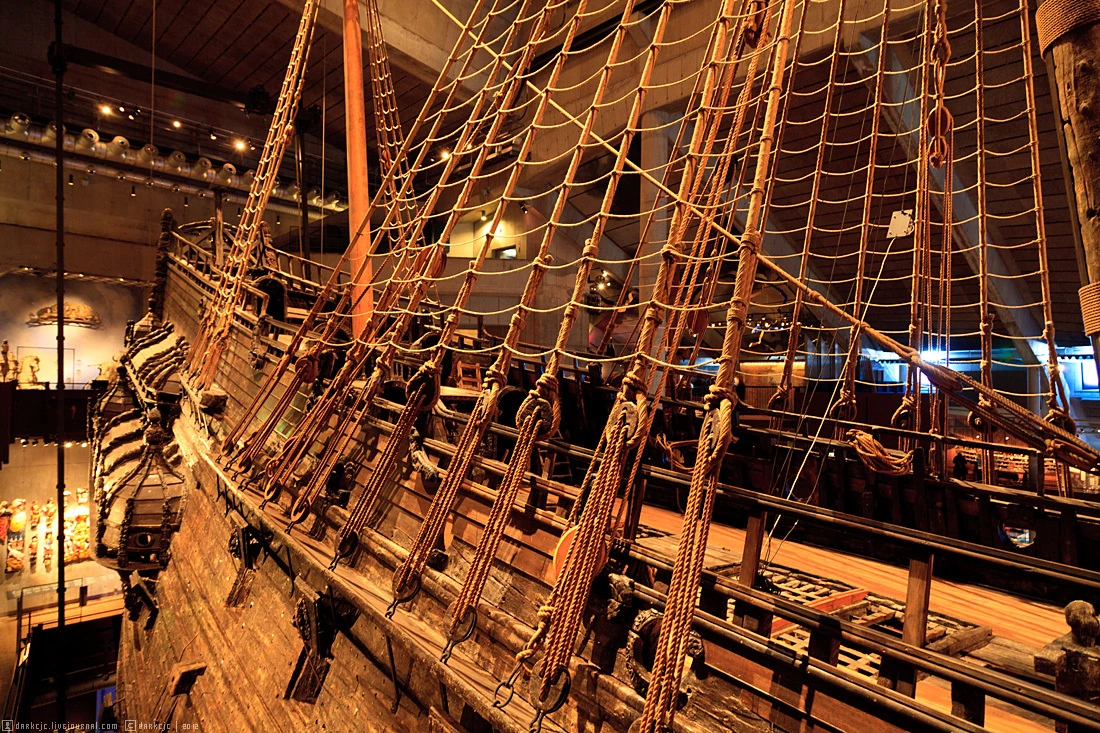
elements snap
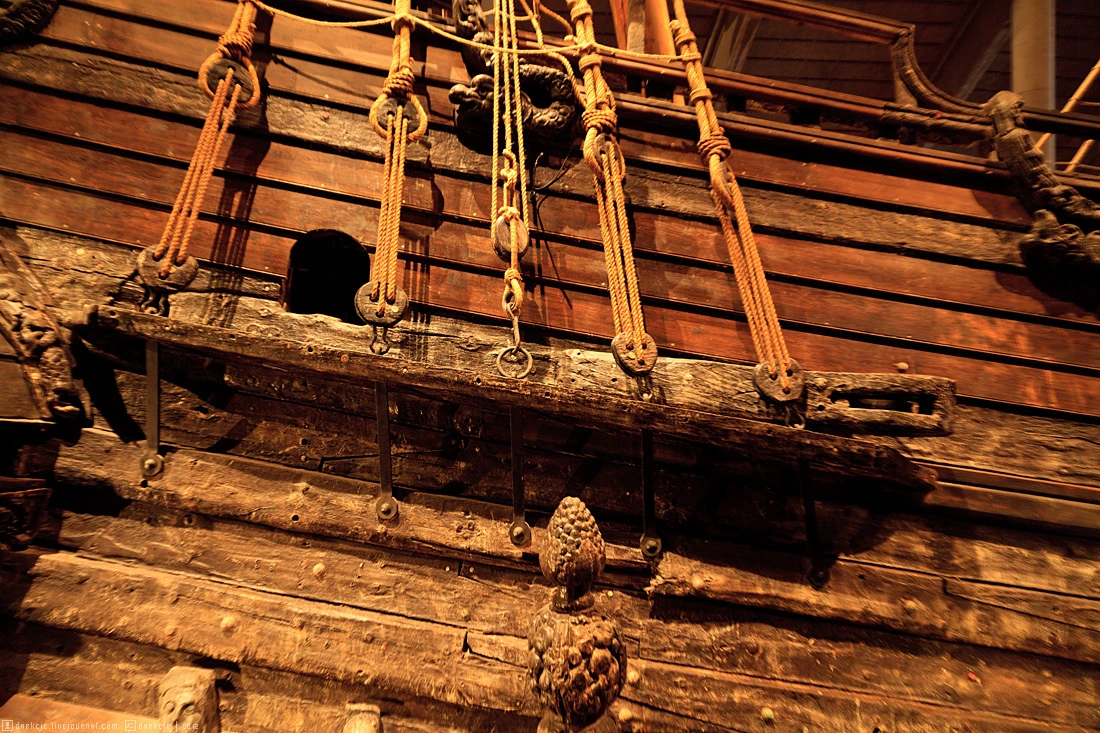
Total 500 sculptures and more than 200 carvings adorn the royal ship.
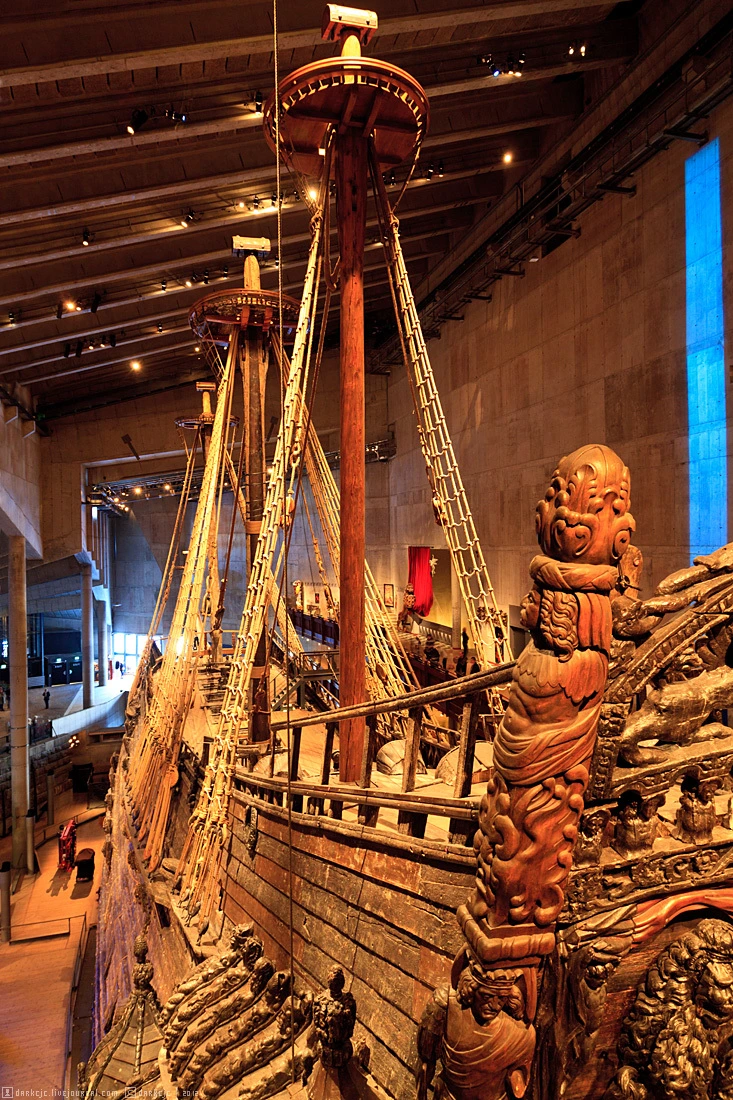
Scientific work to preserve the ship continues to this day. For example, not so long ago it was noticed that the tree began to emit sulfur that has accumulated over hundreds of years of stay in the mud at the bottom.
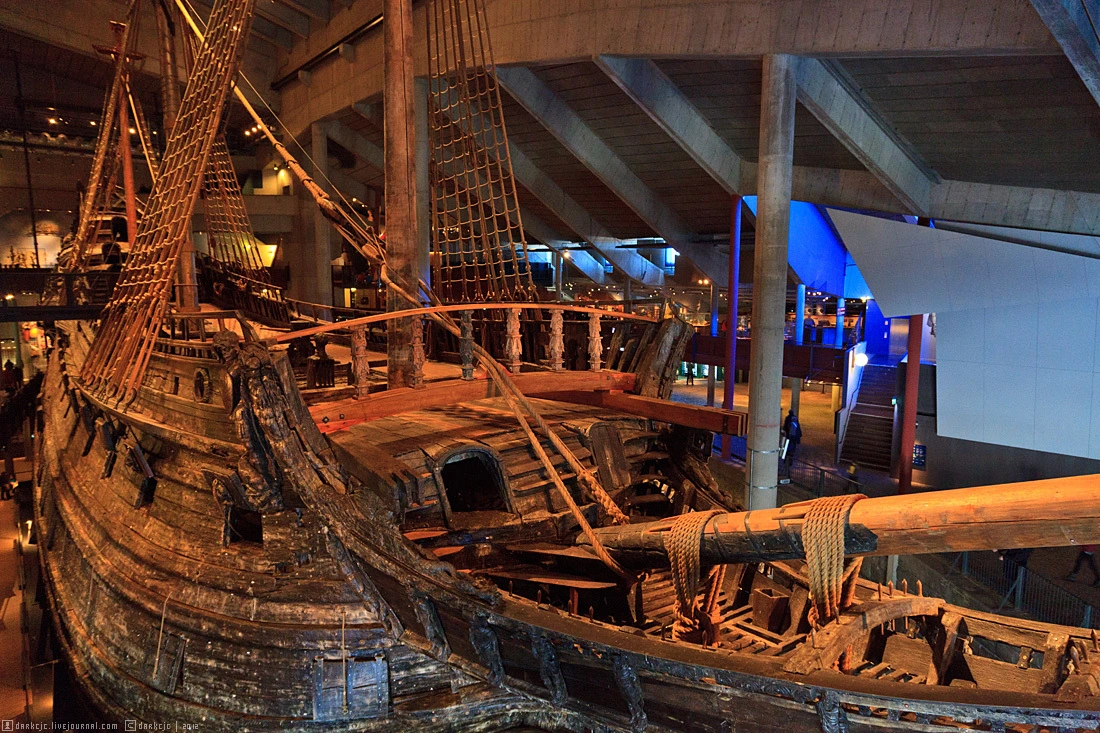
View of the stern and the coat of arms of the royal family. Name of the ship in letters to "Vase" no. But there is a sheaf - coat of arms of the Swedish royal family Vasa. The coat of arms is a sheaf (vase), which symbolizes the name of the ship.
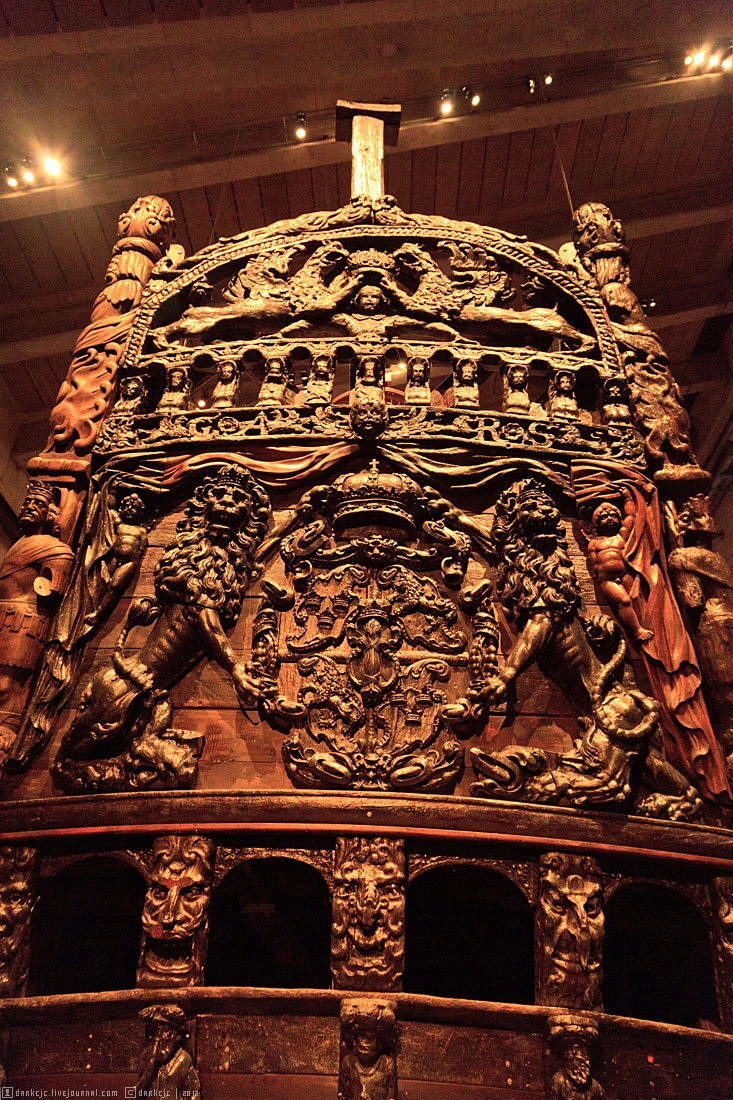
Figure of a lion jumping with legs clamped in a shield with the arms of the royal family.
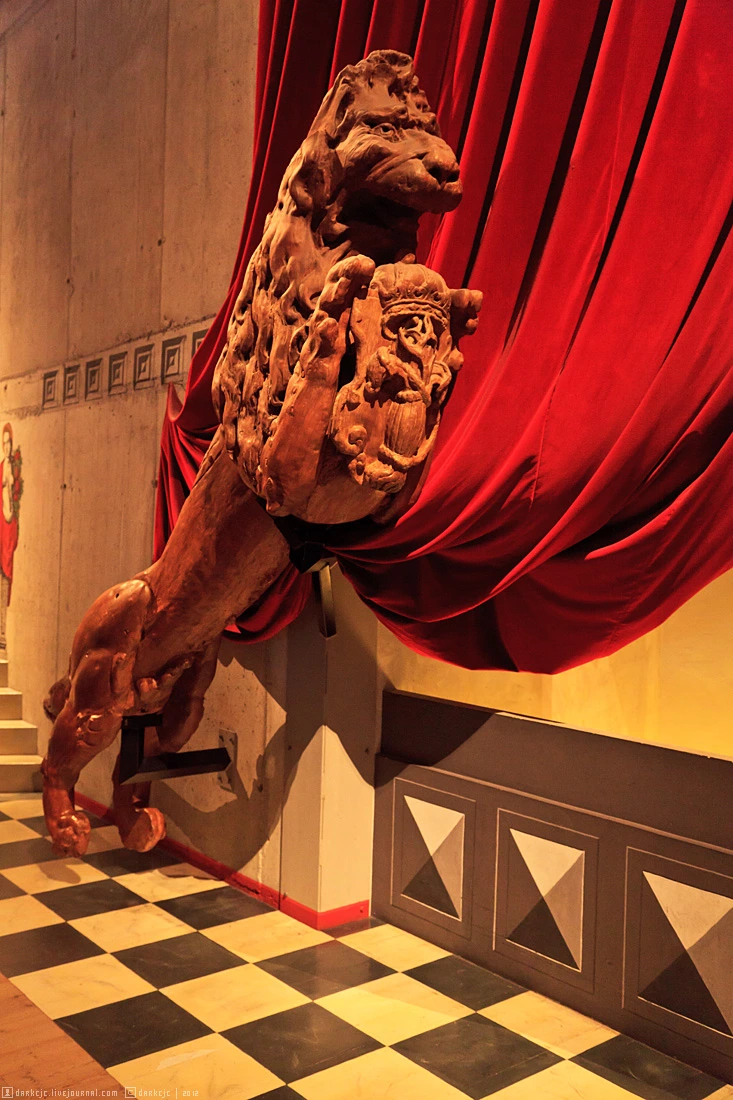
Climb to the ship itself is impossible. Mere mortals is prohibited. Especially for them on one of the floors of the museum recreated two pieces of the ship. Such as the gun deck.
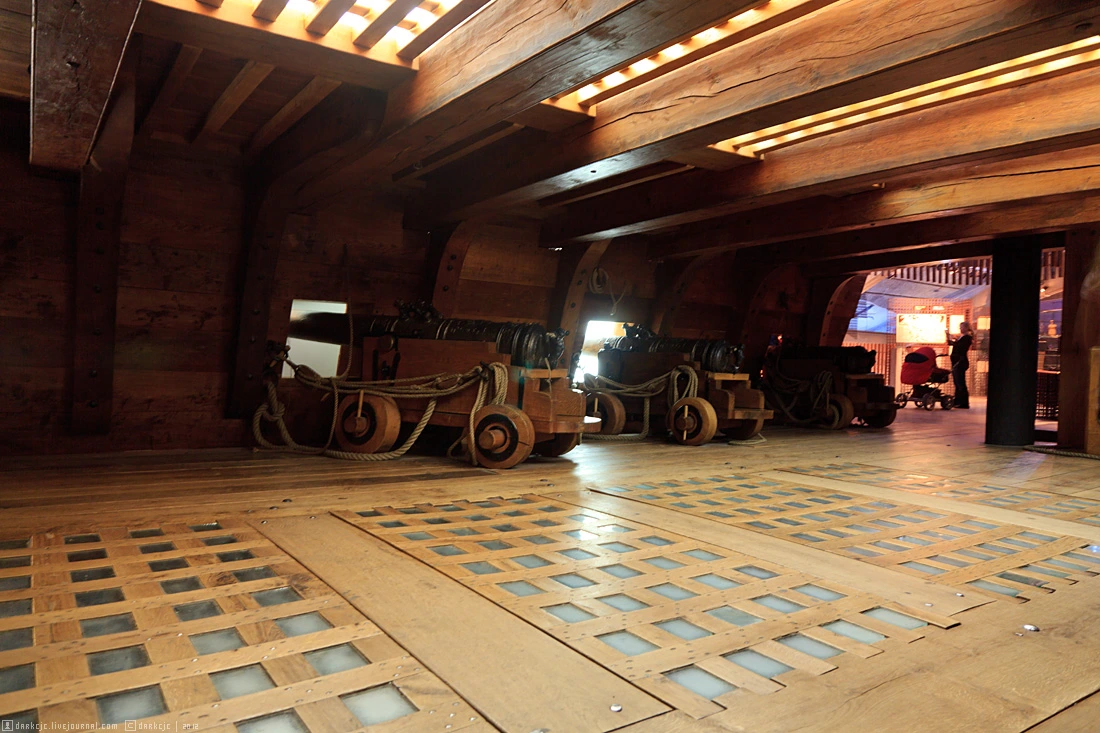
Or take the captain's cabin.
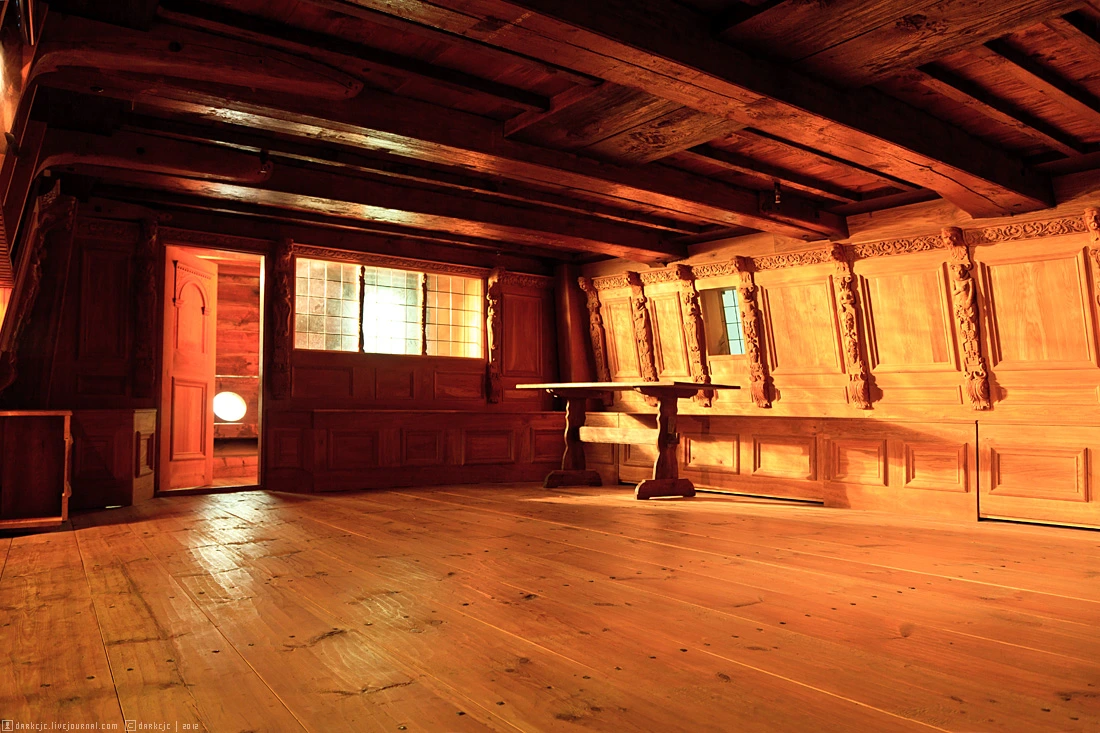
Recreated part of the board. When raised the gun hatches, then the enemy is not only watched the gun barrel, but baring face of a lion.
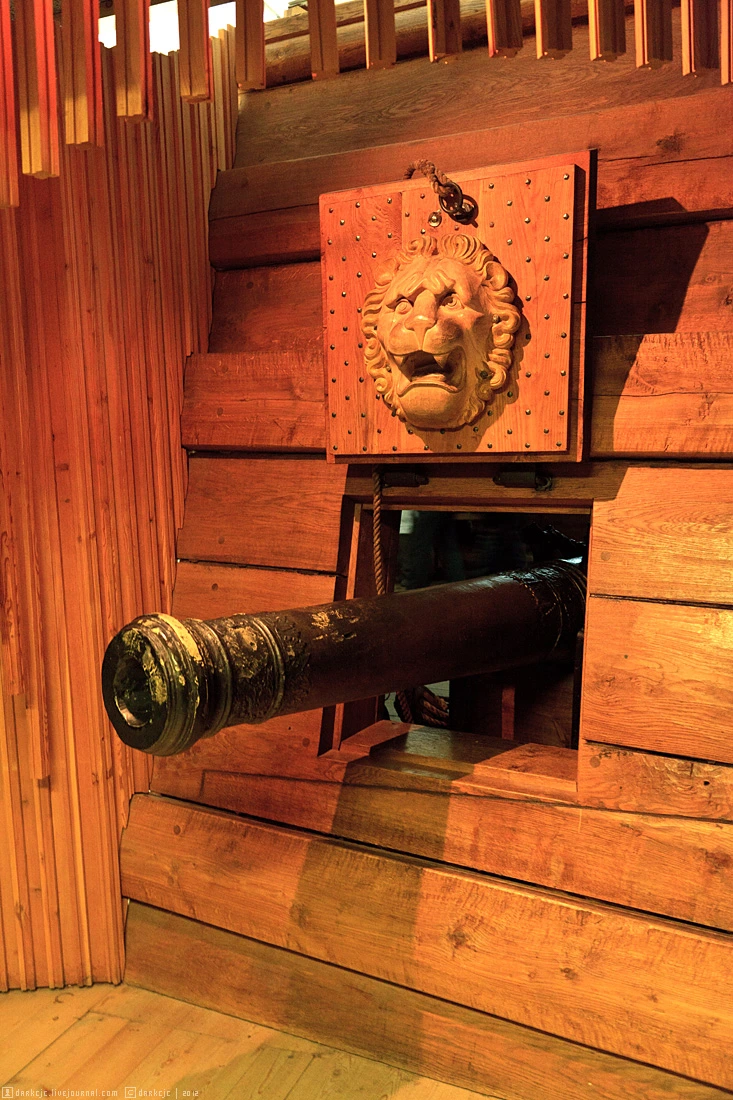
Also in the museum created a miniature ship in the section. You can look at the lives of the crew in detail.
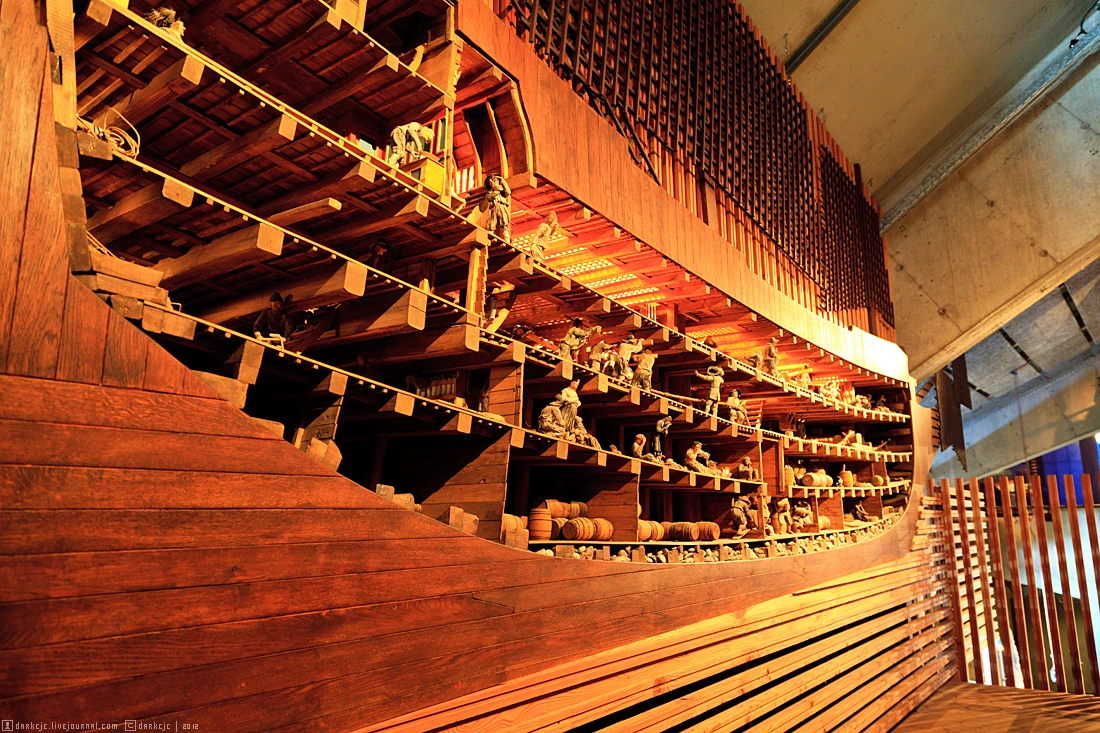
On board the ship at full staffing needs are: 1 admiral, 1 Barber (healer), 1 bugler, one warden, one captain, two lieutenants, 2 pilot, 2 Skipper, 1 ml. non-commissioned officer, Boatswain 6, 4 quartermaster, 90 sailors, 20 gunners, 1 cook, 1 assistant cook, 4 cabin boy, 1 priest, 4 carpenter; Two companies of soldiers: 30 officers and non-commissioned officers, 270 soldiers.
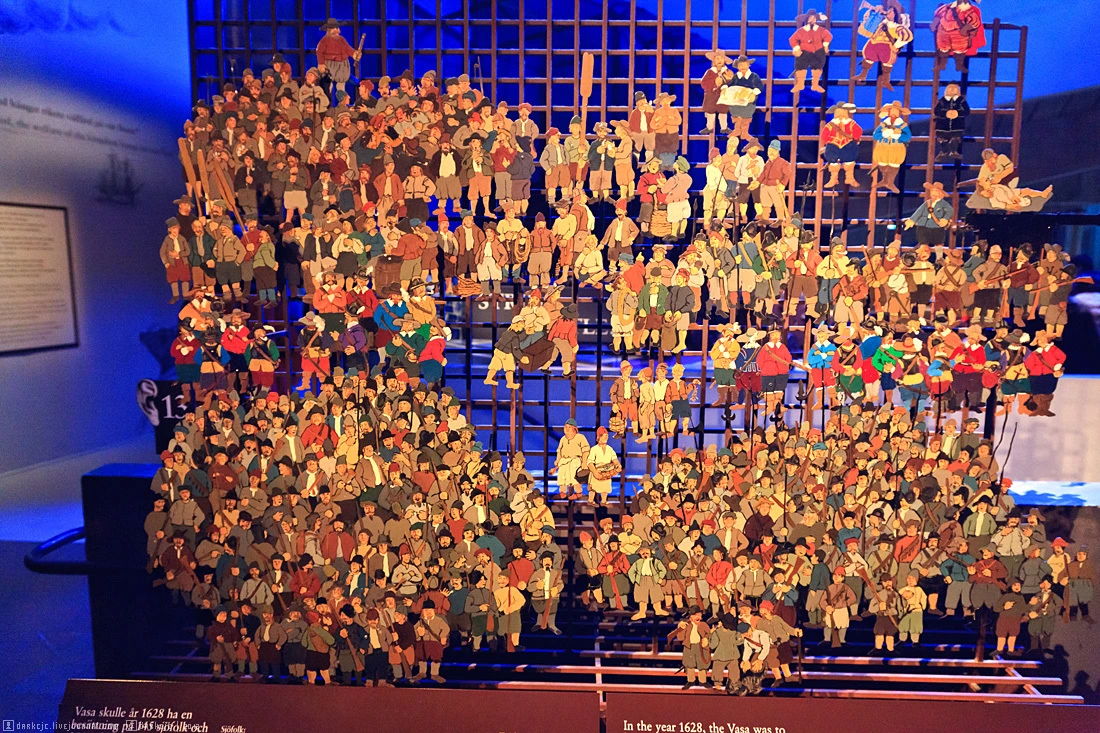
The crew of the ship.
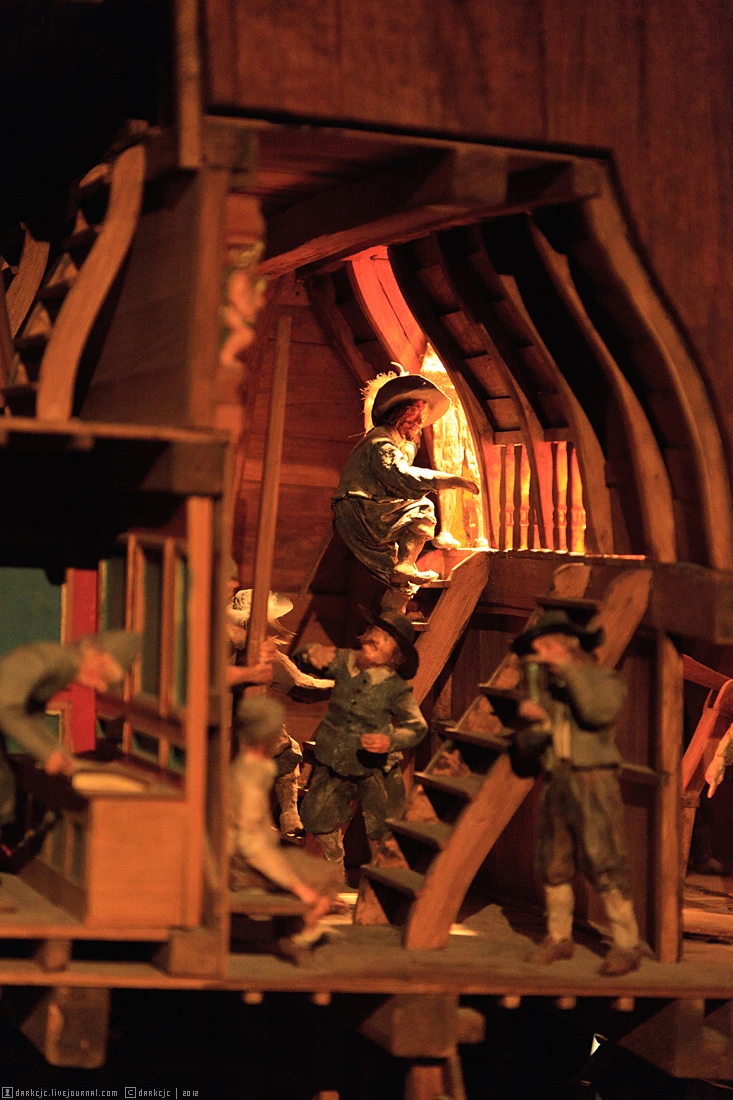
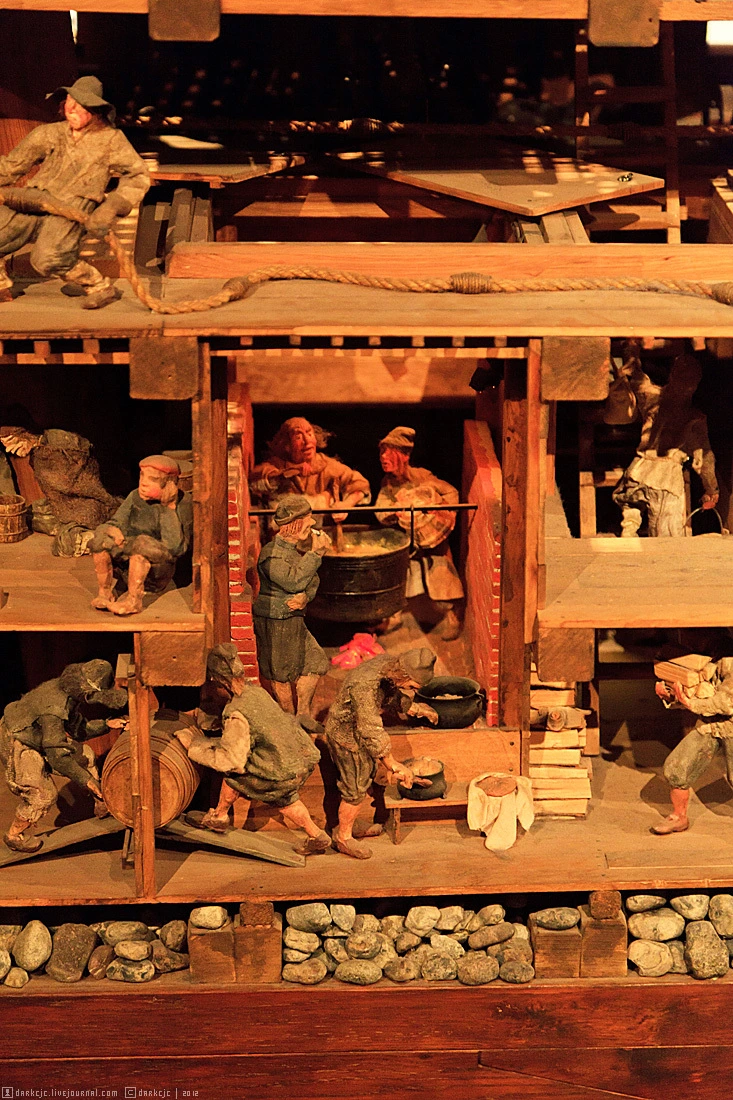
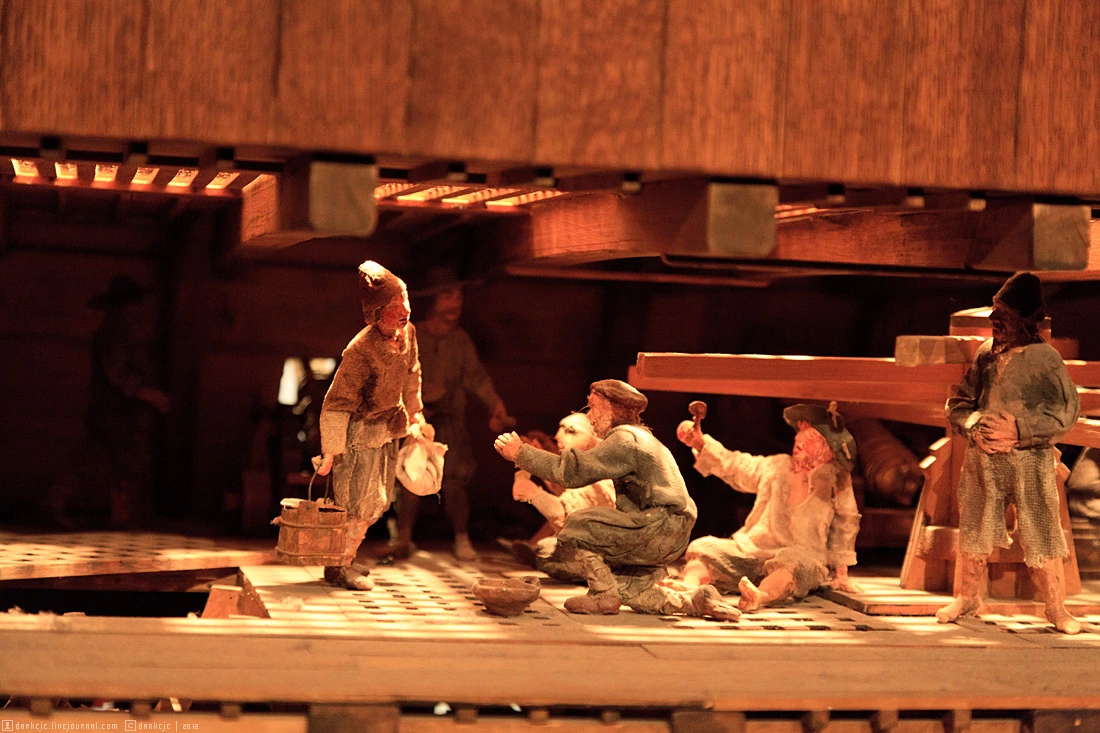
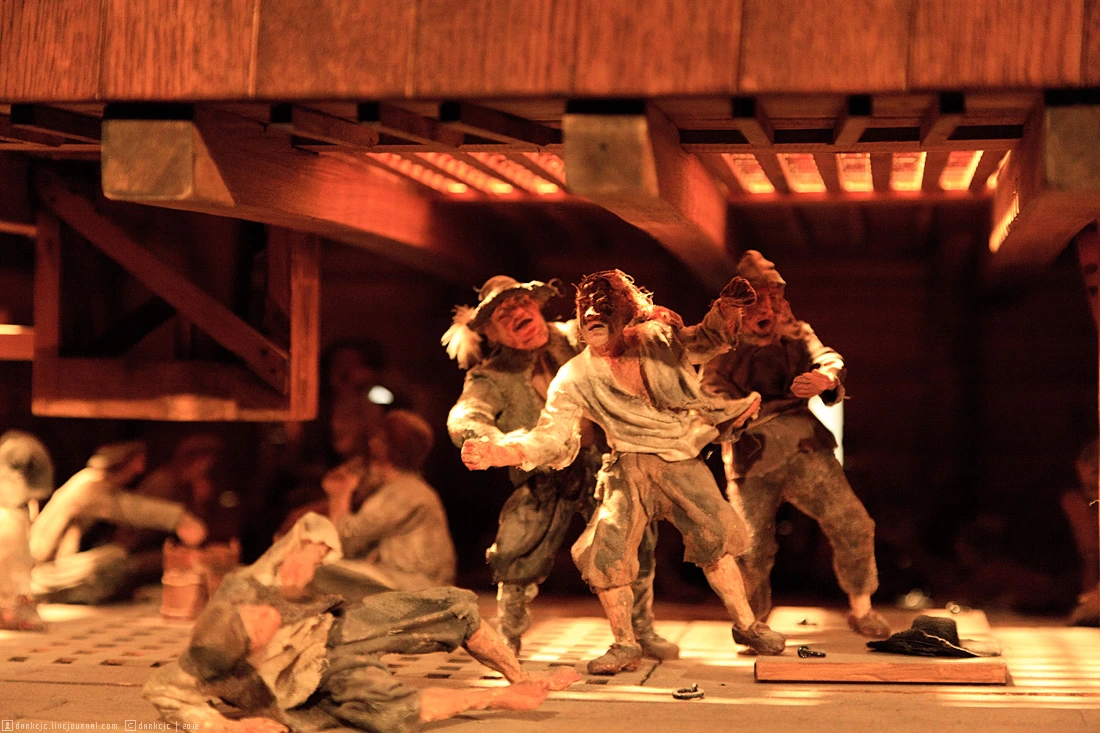
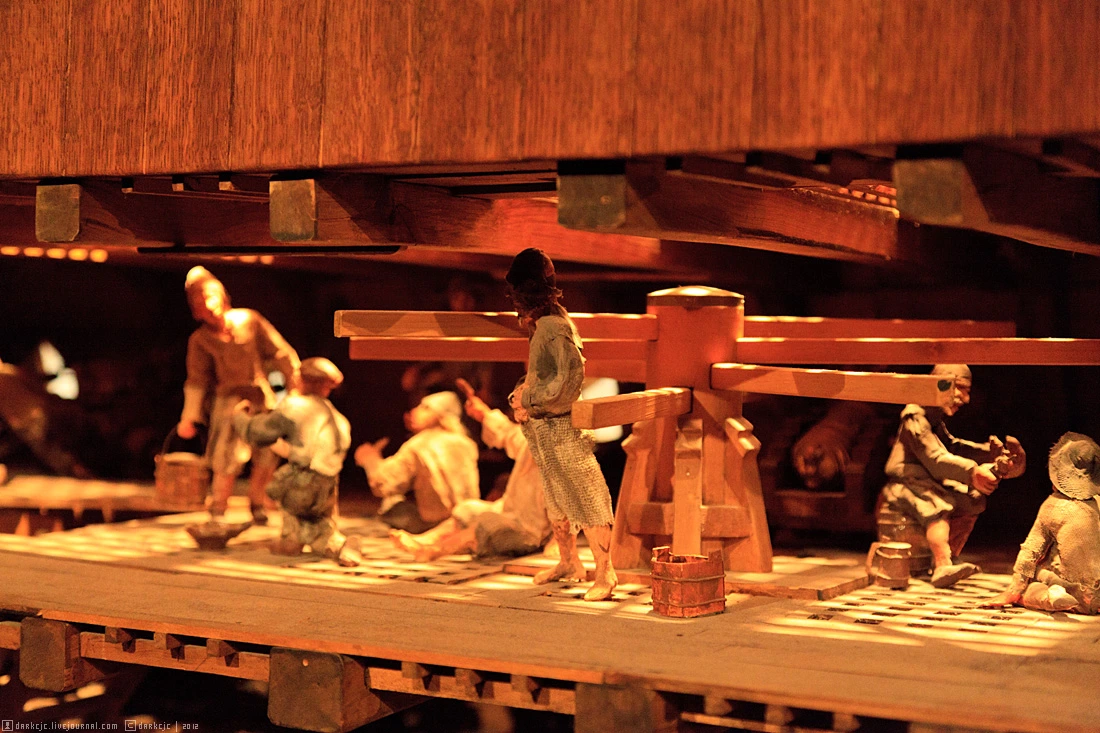
An extensive exhibition of the museum is a lot of things raised with the ship. In the museum you can spend the whole day.
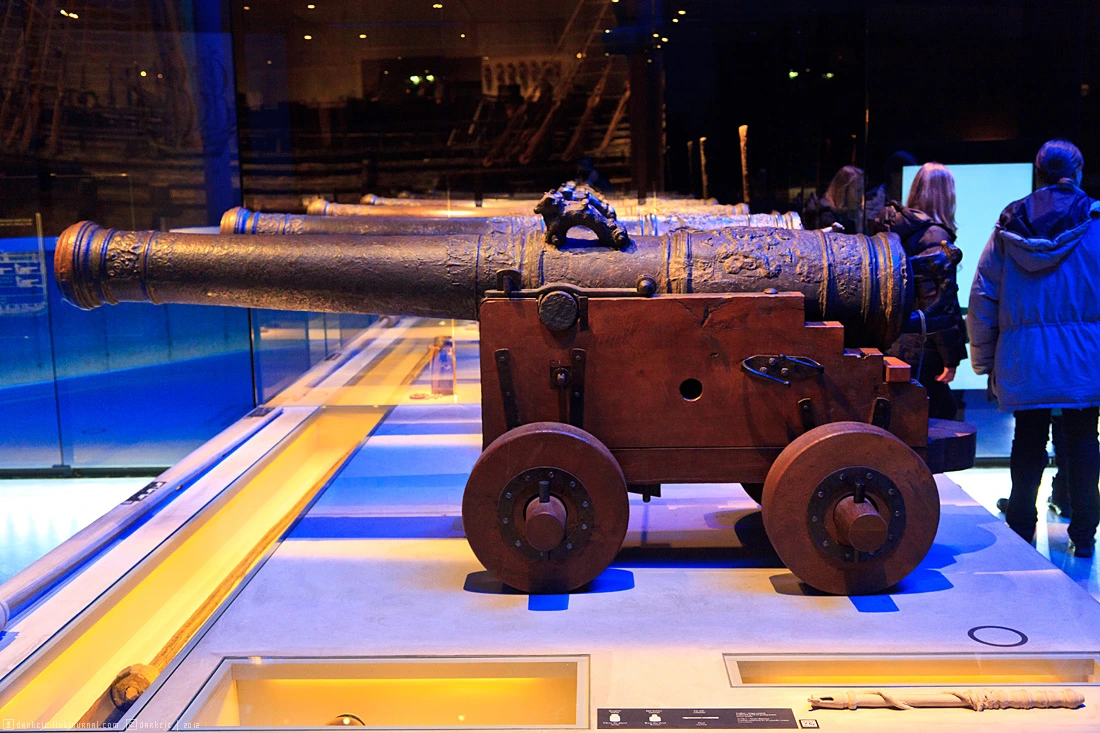
Even cinema is where you will be a half-hour film about the whole history of "Vasa". That is to say to secure the material. Sessions in Swedish, English, French, Russian, German and even some.
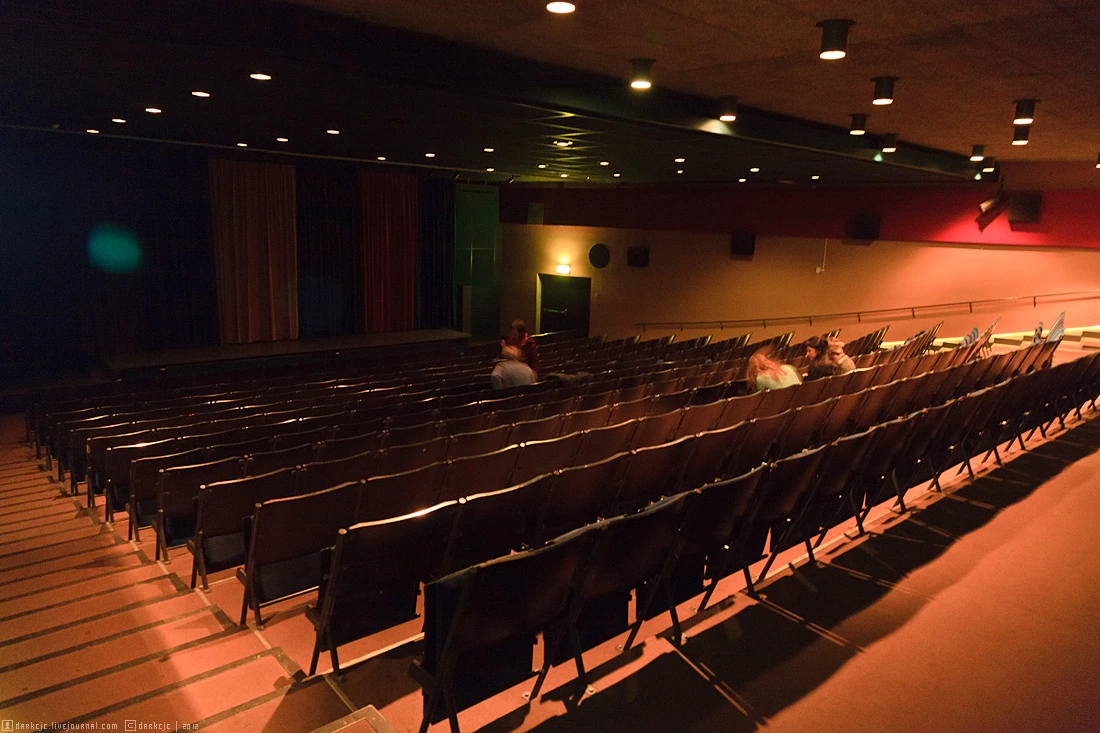
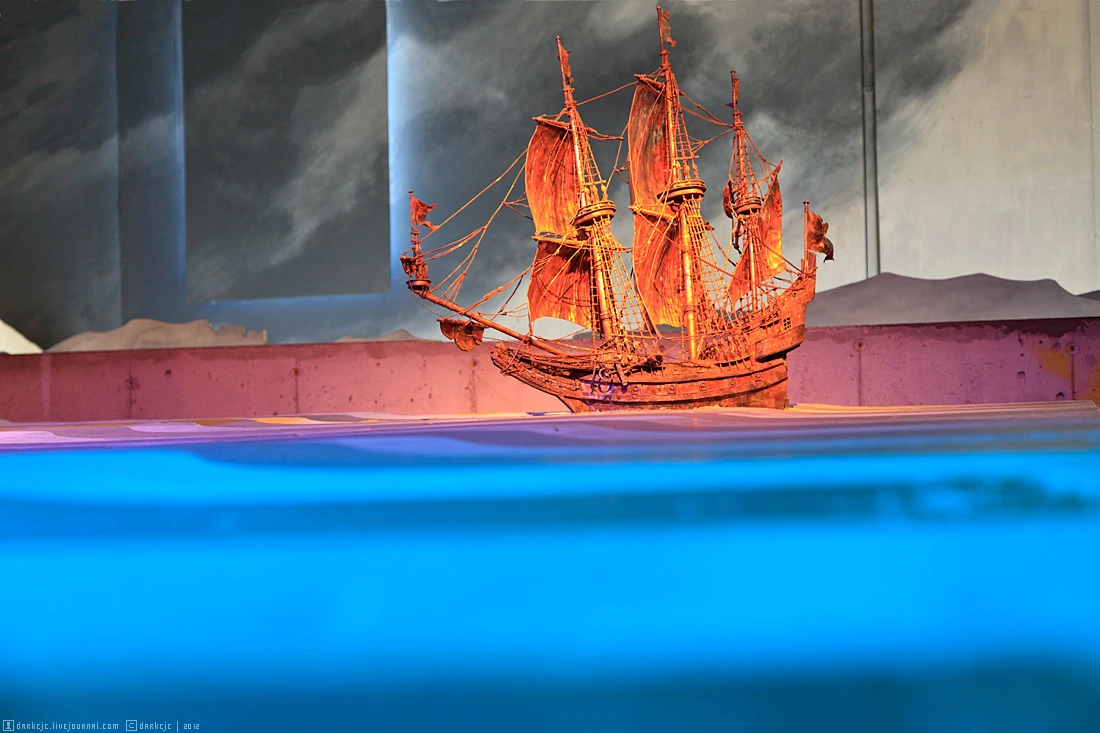
Throw a farewell glance at the ship from the past and face the street. Outside, a Stockholm :)
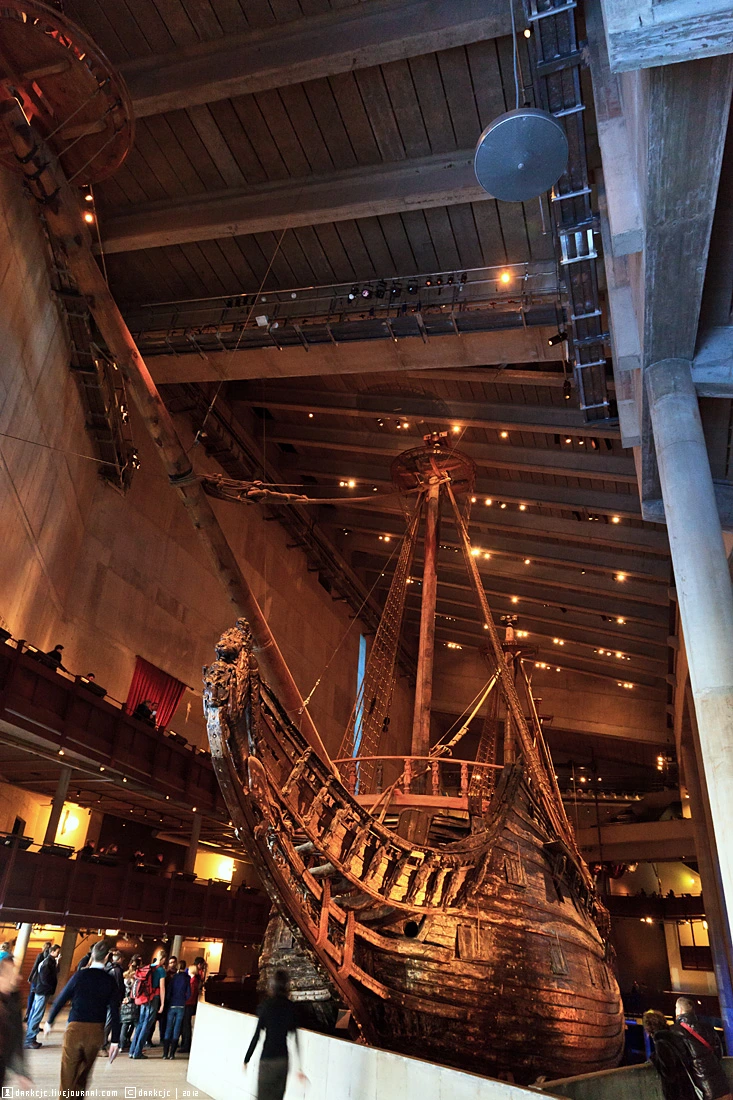
ps all photos shot without a tripod, so I apologize for the quality.
pps Photos and illustrations without watermark found on the Internet or scanned from the book of the museum. Authors: Museum "Vasa" and Erling Matz.


